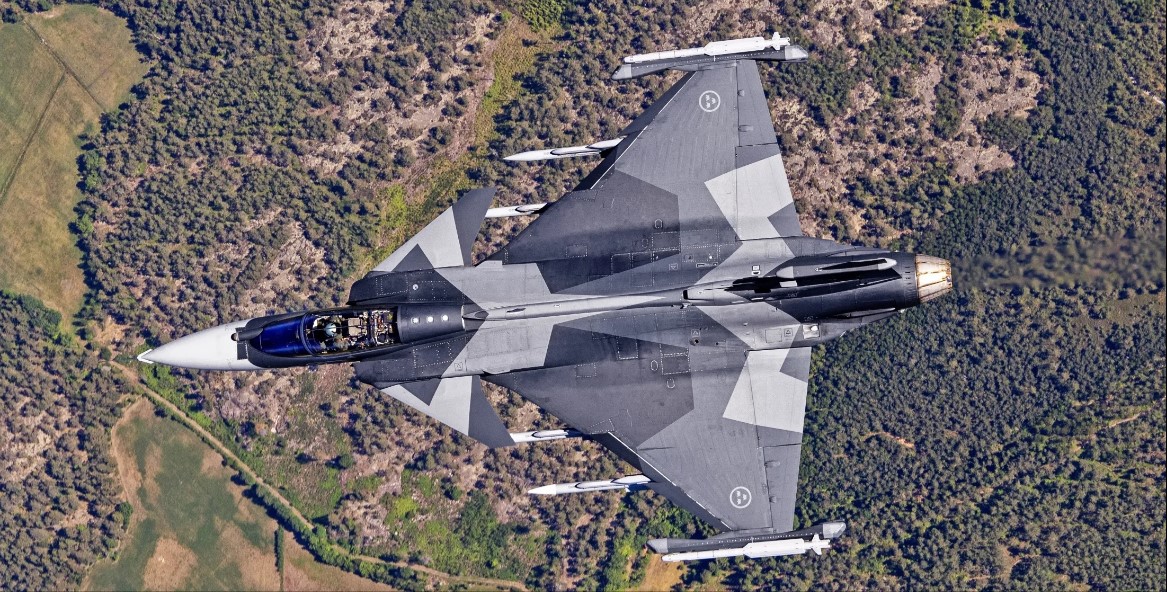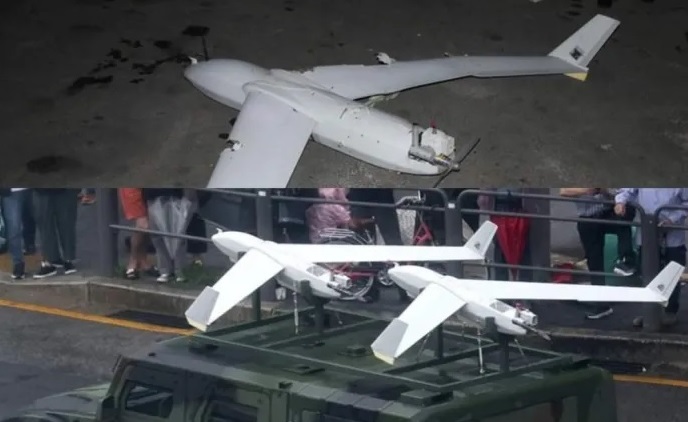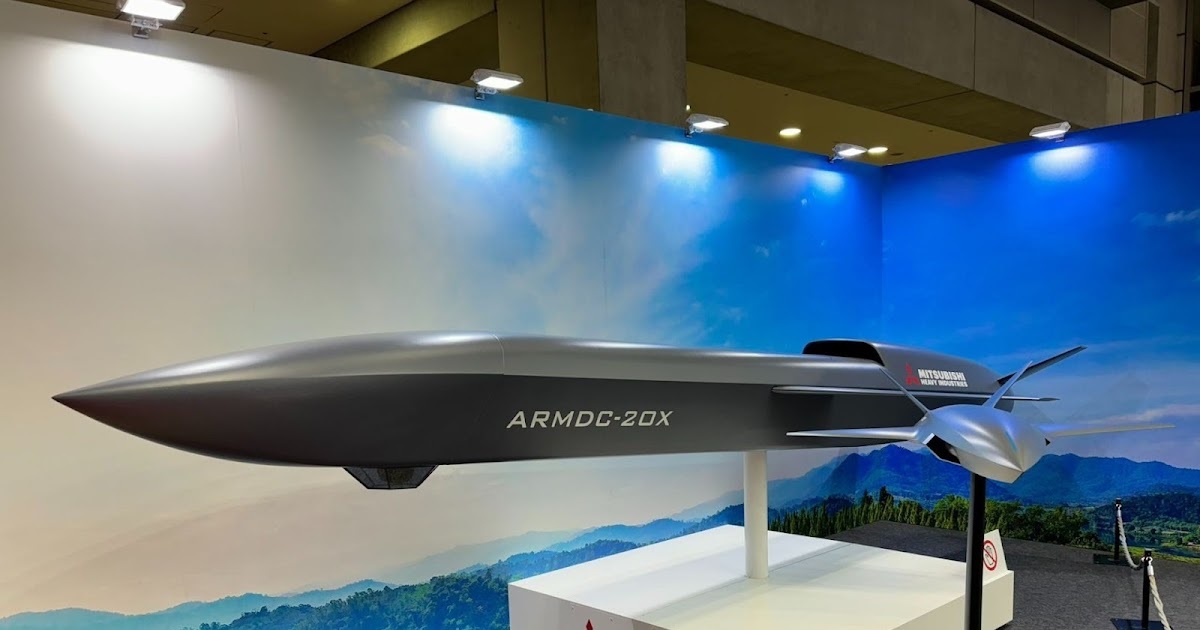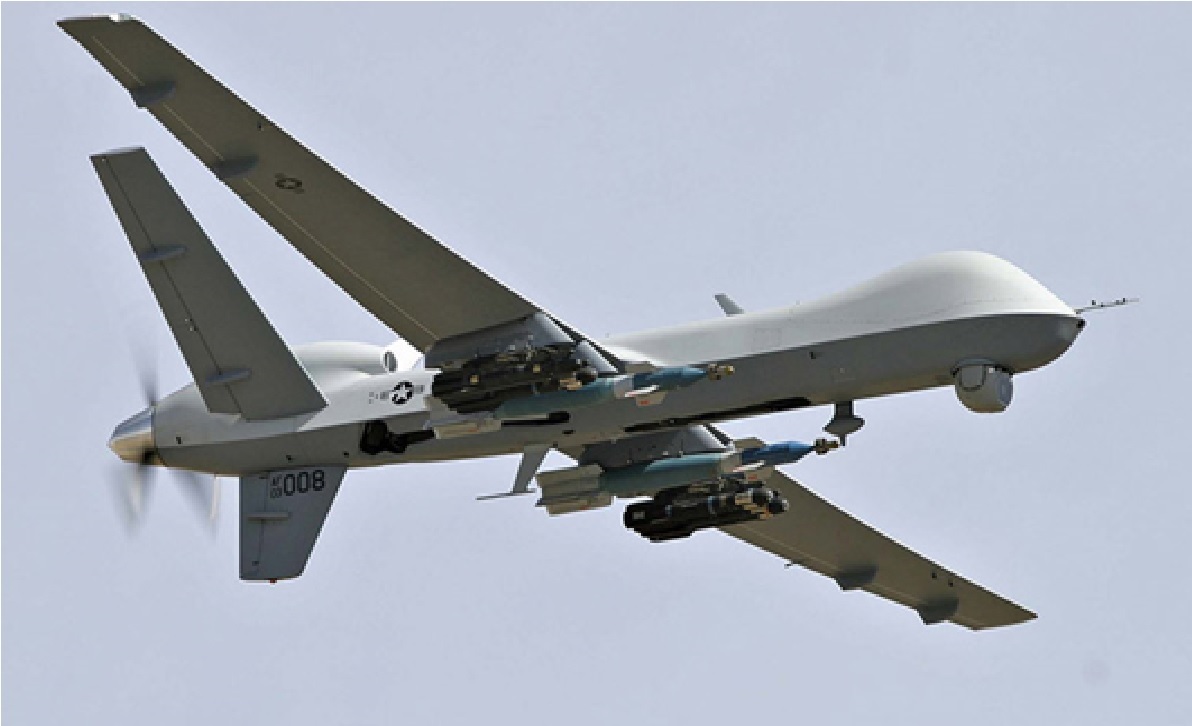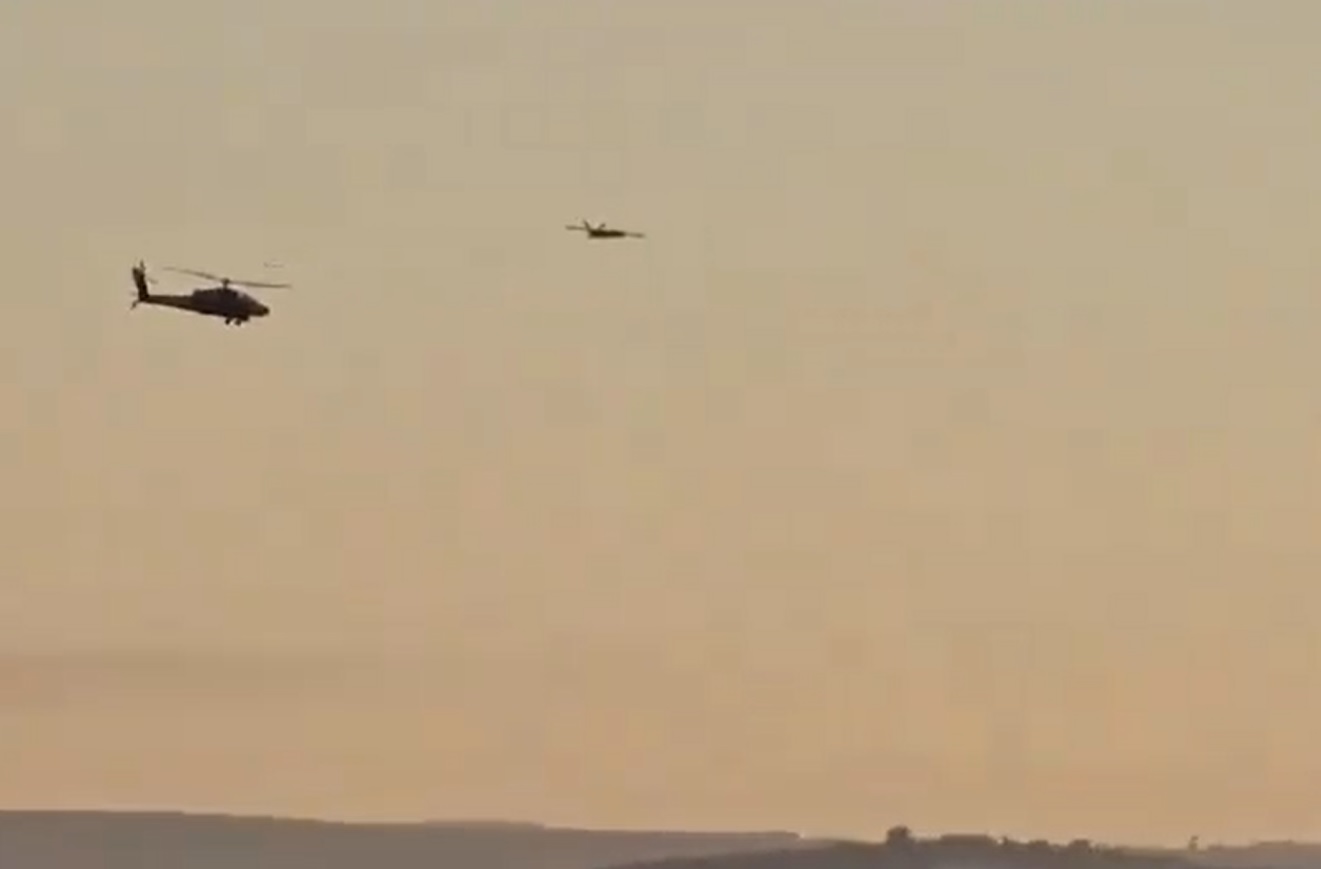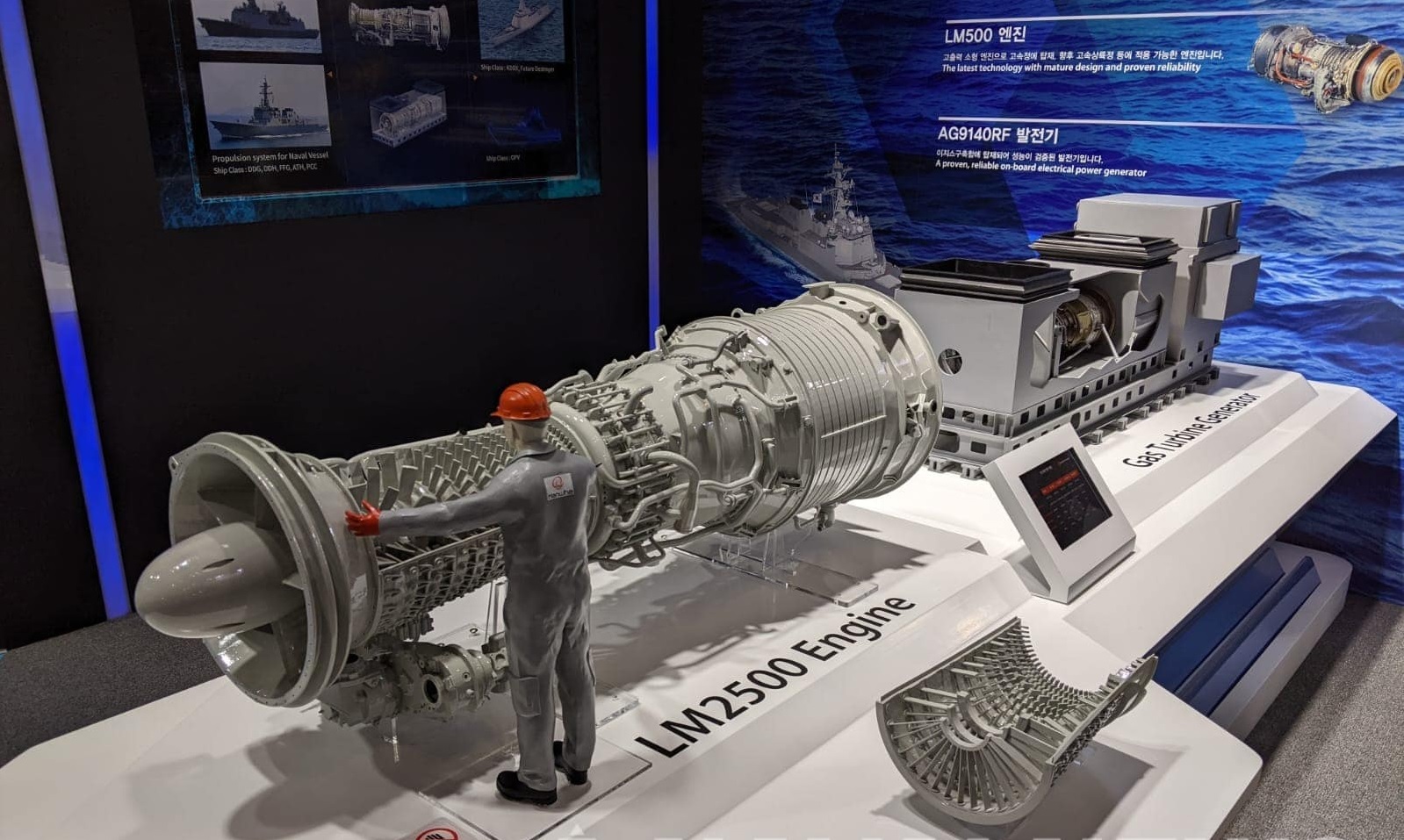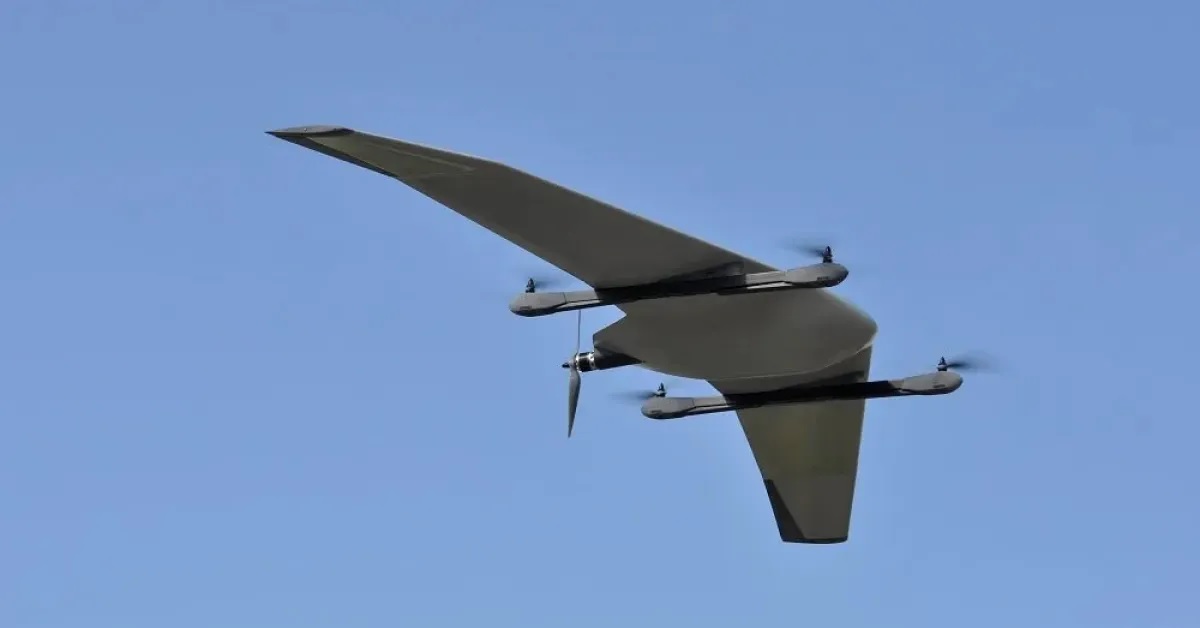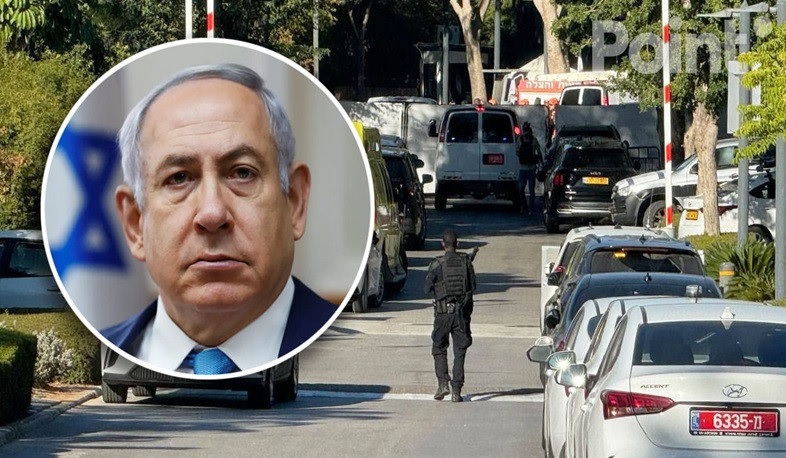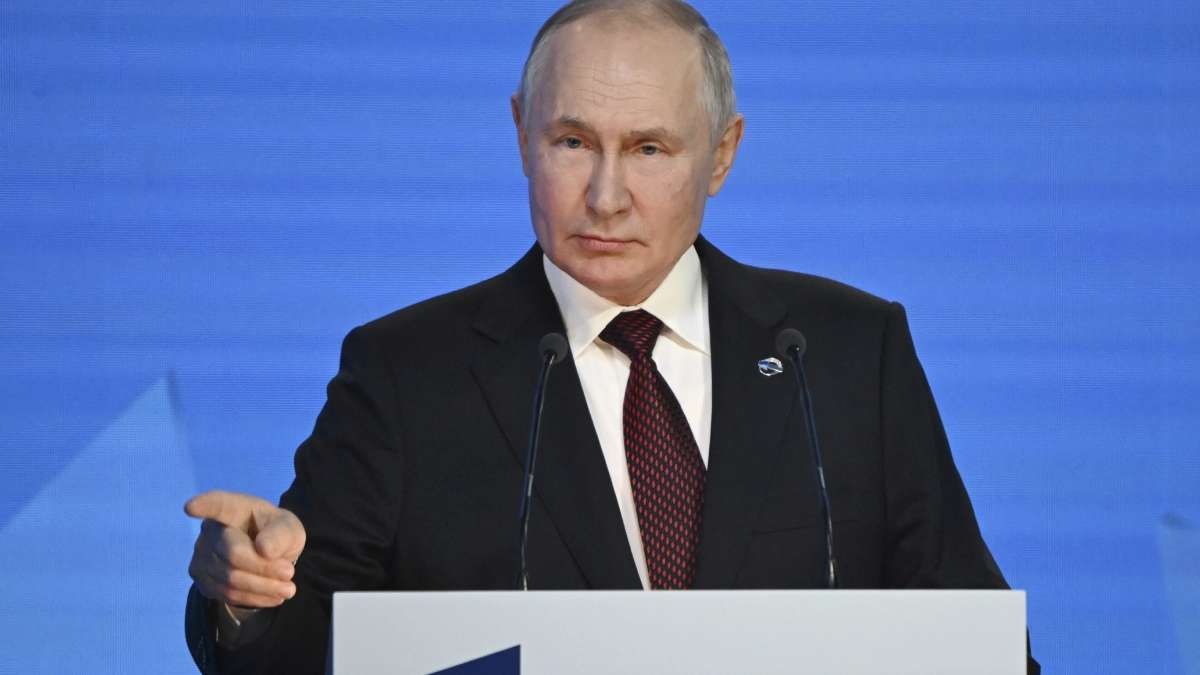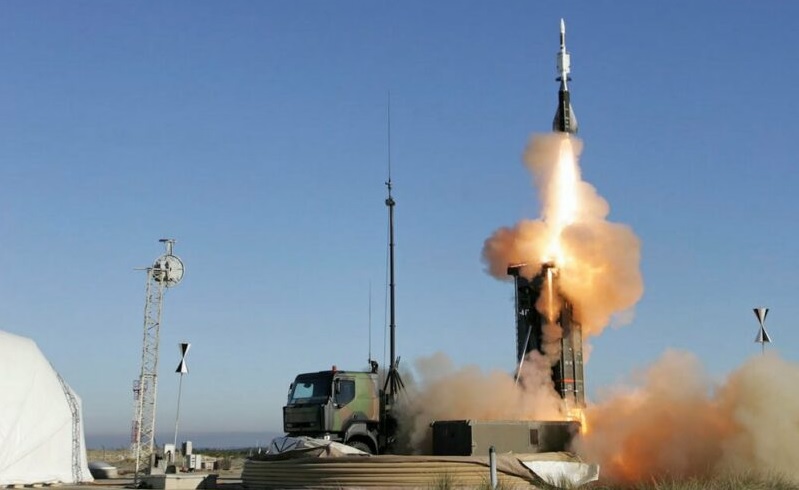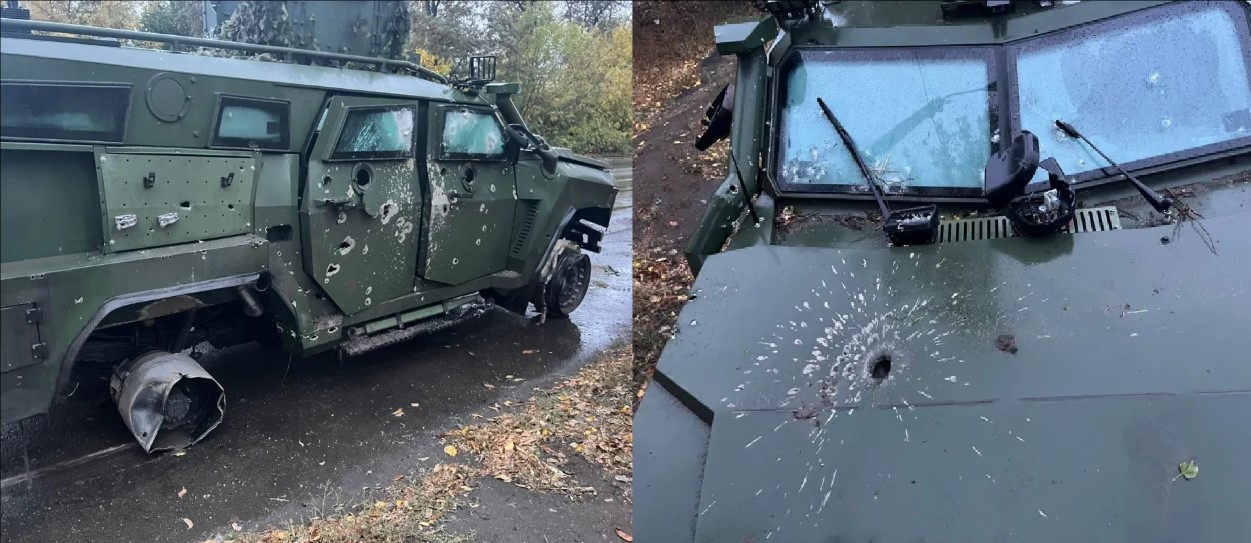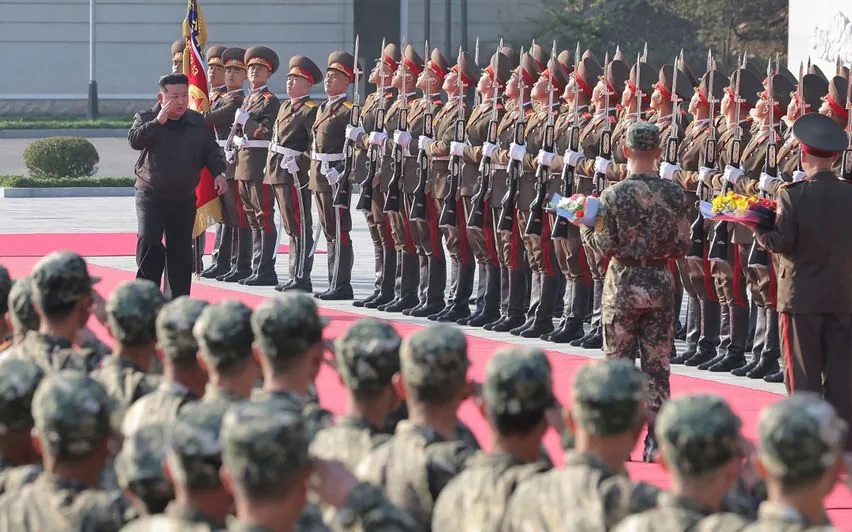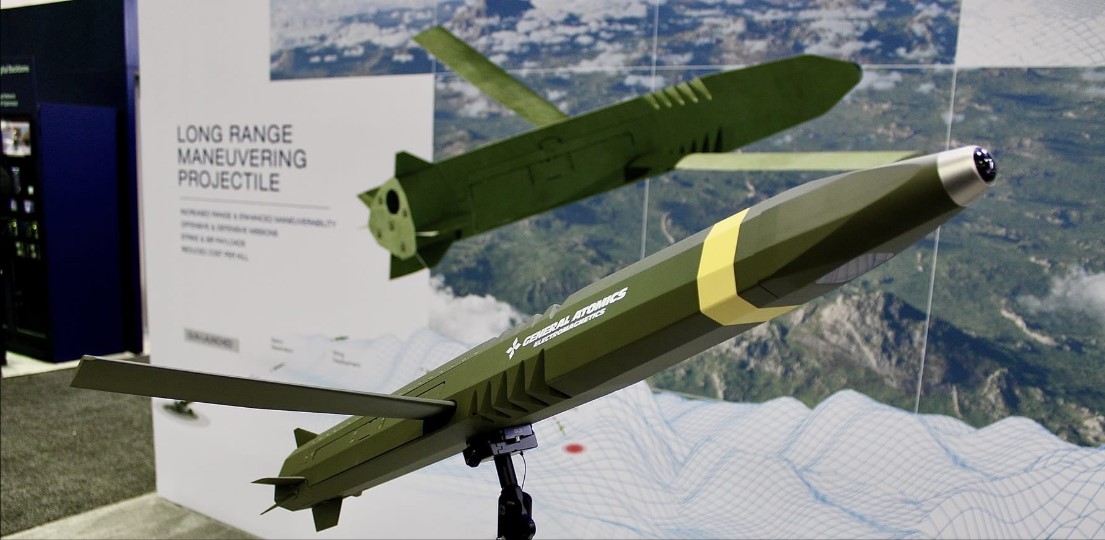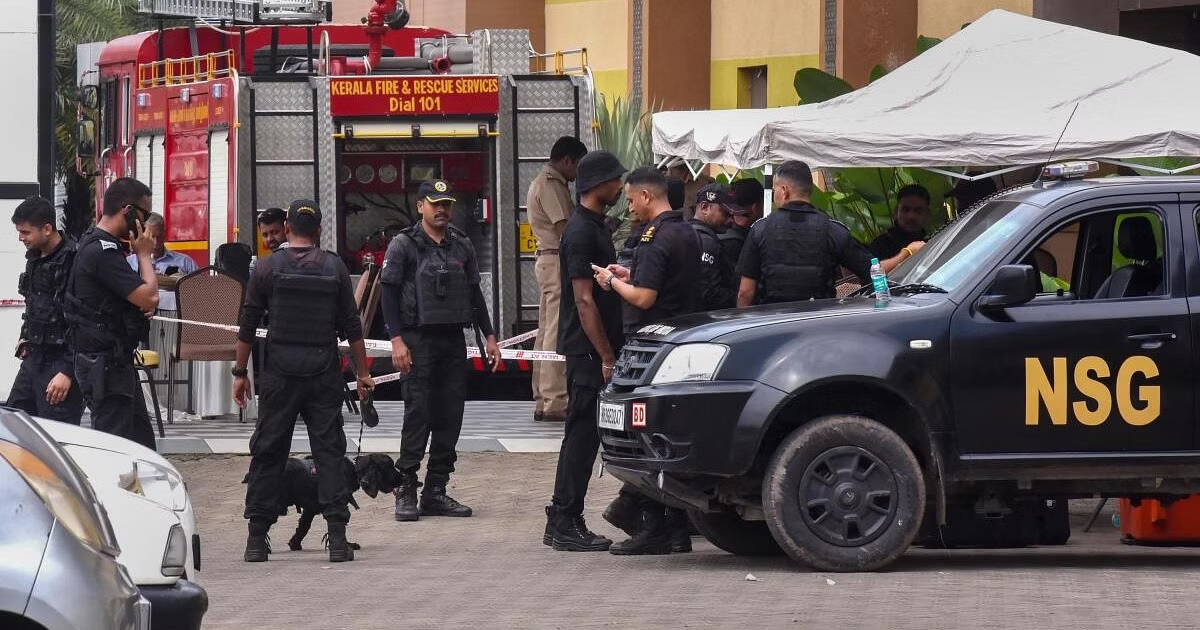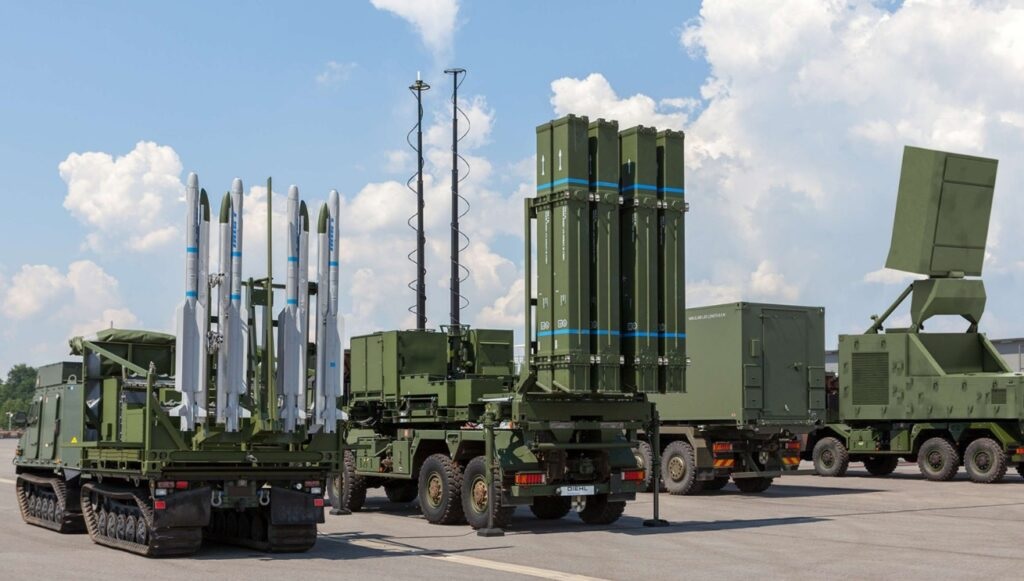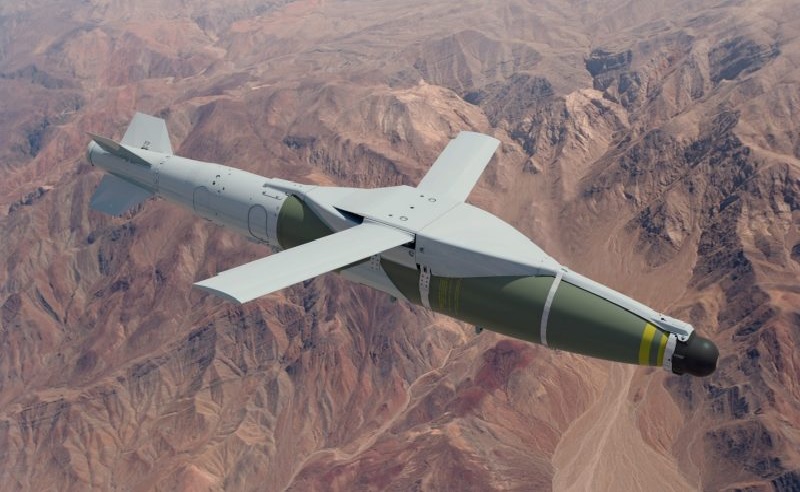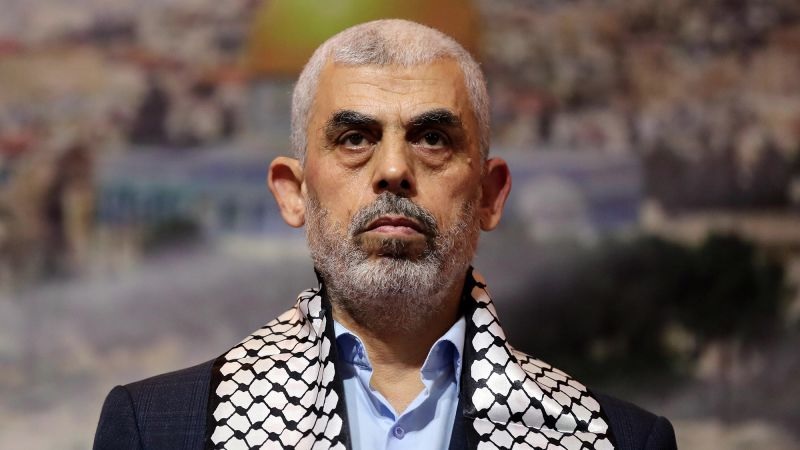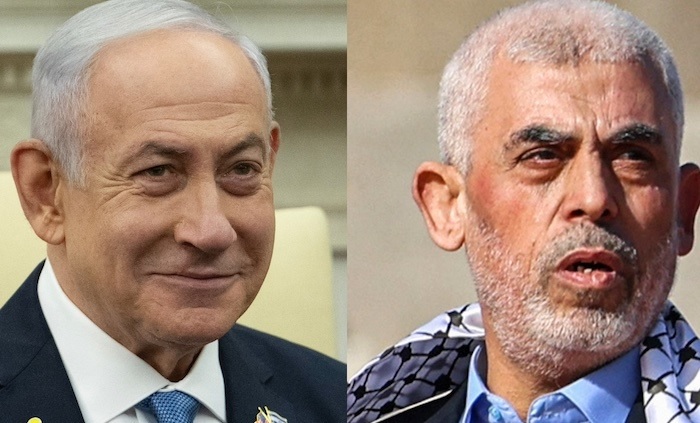World
Garden Reach Shipbuilders & Engineers Ltd. (GRSE) has once again demonstrated its pivotal role in advancing India’s naval capabilities. On October 18, the Kolkata-based shipbuilder announced a ₹491 crore contract for the design, construction, and development of a next-generation Acoustic Research Vessel (ARS). This significant deal, formalized through a Letter of Intent from the Naval Physical & Oceanographic Laboratory (NPOL), a unit of the Defence Research and Development Organisation (DRDO), reinforces GRSE's reputation as a cornerstone in India’s maritime defense industry.The ARS is a specialized vessel that will play a crucial role in underwater acoustic research, a field vital for enhancing submarine detection, naval communication, and other undersea operations. By integrating cutting-edge technology, the ship will serve as a platform to conduct advanced research in underwater acoustics, furthering India’s capabilities in anti-submarine warfare, naval surveillance, and oceanographic studies. The inclusion of sophisticated sonar systems, data collection sensors, and advanced instrumentation will allow researchers to gather critical data for strategic defense purposes.This ₹491 crore project covers not just the construction of the vessel, but also includes the integration of complex equipment, rigorous testing, certification, and final commissioning. GRSE is expected to complete the project within 36 months, a timeline that underscores the urgency and importance of this vessel in bolstering India's naval defense research. The ARS is poised to become a vital asset for the Navy’s future operational needs, especially in a time when maritime security and research are critical to national defense strategies.Beyond the ARS contract, GRSE continues to strengthen its position in shipbuilding through various other projects. Earlier in October, GRSE secured contracts to design, build, and maintain hybrid electric ferries for West Bengal under the WBIWTLSD Project. These ferries, aimed at providing eco-friendly transportation across riverine areas, demonstrate GRSE's versatility. The company is tasked with delivering 100 non-AC ferries and 200 twin-deck ferries with air-conditioned main decks, all powered by hybrid electric propulsion systems. These vessels are expected to significantly reduce the carbon footprint of West Bengal’s ferry operations.Additionally, GRSE has taken strides in the international market. The company recently signed a contract to build and deliver a 7,500 Deadweight Tonnage (DWT) multi-purpose vessel for Germany’s Carsten Rehder Schiffsmakler and Reederei GmbH. This agreement is part of an existing option contract, which includes the construction of four more vessels of the same class. The company’s foray into building multi-purpose vessels, which can be used for a variety of cargo and utility roles, highlights its growing footprint in global shipbuilding.The Acoustic Research Vessel project itself is of particular significance as India steps up its focus on developing indigenous defense capabilities. The ARS will contribute to a deeper understanding of underwater acoustics, enhancing the Navy’s ability to operate in different oceanographic conditions and environments. This will be essential in advancing anti-submarine warfare and improving communication systems vital for the Navy's long-term strategic goals. The vessel is expected to be equipped with high-grade sonar systems, underwater microphones, and hydrophones to study sound propagation in water, detect submarines, and evaluate underwater communication technologies. As a nod to the future, GRSE’s involvement in diverse projects, from military research vessels to green hybrid ferries, speaks to its adaptability and growth in both defense and civilian shipbuilding. The ARS contract, in particular, showcases the company's expertise in handling high-tech, research-intensive vessels, further solidifying its role as a premier shipbuilder in India’s defense ecosystem. With a steady stream of contracts and a robust order book, GRSE is not only contributing to India’s defense infrastructure but also making strides in sustainable and commercial shipbuilding.In an era where maritime security is of paramount importance, this next-gen Acoustic Research Vessel, once completed, will be a game-changer for the Indian Navy’s research and operational capabilities, ensuring that India remains ahead in the field of underwater acoustic research and naval defense.
Read More → Posted on 2024-10-20 15:03:54India
In a significant move that could shape the future of the Indian Air Force (IAF), Swedish aerospace giant Saab has reasserted its offer to supply India with its state-of-the-art Gripen E/F fighter jets. Saab’s proposal is part of India's massive $20 billion Multi-Role Fighter Aircraft (MRFA) deal, which seeks to procure 114 advanced fighter jets under the "Make in India" initiative. Saab's pitch is ambitious and compelling: delivery of the first India-built Gripen jet within just three years, combined with a complete transfer of technology to India.Saab has positioned itself as a strong contender, emphasizing not only the capabilities of the Gripen E/F jets but also its commitment to building a robust local ecosystem for production in India. Kent-Åke Molin, Saab’s Campaign Director for the India Programme, has stressed that the offer includes full-scale production within Indian borders. This production would cover more than just the airframe; it would also include the systems and software that are crucial to the jet’s cutting-edge capabilities. Molin emphasized Saab’s vision of rapid indigenization, stating that they could localize the platform’s production to an extensive degree.The Indian government’s MRFA deal is critical for modernizing its air force, and the competition to secure this contract is fierce. Saab’s Gripen E/F is up against formidable competitors like the Dassault Rafale, Boeing’s F/A-18 Super Hornet, Lockheed Martin’s F-21, Russia's MiG-35, and the Eurofighter Typhoon. A key part of the deal is the requirement for significant technology transfer, allowing India to build its own domestic defense capabilities. Saab’s offer stands out by not only meeting these requirements but promising to deliver the first India-built Gripen jet within three years of contract finalization.Why the Gripen E/F Stands OutThe Gripen E/F jets offer some unique advantages in this competition. Known for their flexibility and cost-effectiveness, these jets are already being used by nations like Brazil and Thailand. The Gripen's modular design allows for easy upgrades and integration of new technologies, making it future-proof in many ways. Moreover, Saab boasts strong expertise in avionics, software, radar, and electronic warfare systems—many of which are developed in-house. This not only enhances the jet’s combat effectiveness but also ensures that it can be customized to meet the IAF’s specific needs.One of the Gripen’s standout features is its AI-assisted pilot decision-making, which aids the pilot in high-stress combat scenarios. The fighter is also equipped with network-enabled capabilities, allowing it to integrate seamlessly with other platforms. This could be crucial for India as it aims to enhance the interoperability of its forces. The aircraft is also designed for quick software upgrades, ensuring it remains at the cutting edge of technology for years to come.In terms of performance, the Gripen E/F can reach speeds of Mach 2 and has a combat radius of approximately 800 kilometers, making it a versatile asset in both offensive and defensive roles. Its advanced AESA (Active Electronically Scanned Array) radar offers enhanced situational awareness, and the electronic warfare capabilities provide robust defense against a variety of threats.Saab's Partnership with Indian IndustrySaab’s offer goes beyond just delivering aircraft. It is about establishing a long-term partnership with India’s defense industry. Saab has been actively engaging with Indian private-sector companies, including the Adani Group, to explore potential partnerships for local production. This could have far-reaching benefits for India’s defense sector, as the technology transfer would enable Indian engineers and technicians to build sophisticated components like avionics, mission computers, and sensor systems domestically. While the jet’s engine, the GE F414, would still come from the U.S.-based General Electric, Saab’s pitch focuses heavily on maximizing the indigenization of other critical systems.Molin highlighted that Saab’s internal expertise in radar, electronic warfare, and sensor fusion technologies would allow India to integrate its own indigenous systems into the Gripen platform. This could be a game-changer for India’s defense technology landscape, giving the country a level of autonomy and self-reliance in fighter jet production that it has long sought.The Road Ahead for the MRFA CompetitionAs the MRFA competition heats up, Saab’s aggressive bid, with its emphasis on technology transfer and rapid delivery, adds a new dimension to India’s decision-making process. The offer not only promises to enhance India’s air combat capabilities but also aligns with the country’s broader goals of self-reliance in defense production. The Gripen E/F is a formidable aircraft with export success already achieved in countries like Brazil, where local production is also being set up. Saab’s experience in creating local ecosystems for fighter jet production could prove valuable as India seeks to become a global defense manufacturing hub.In the coming months, the IAF’s decision will have significant implications, not just for the future of India’s air power but also for its domestic defense industry. If Saab’s bid is successful, it could redefine the landscape of defense manufacturing in India, bringing advanced technology, skills, and long-term partnerships to the country.With its promise of delivering advanced capabilities, complete technology transfer, and a three-year delivery timeline, Saab’s Gripen E/F offer presents a powerful option for India’s $20 billion MRFA deal.
Read More → Posted on 2024-10-19 15:59:53World
The already fraught relations between North and South Korea took another tense turn when North Korean state media, KCNA, released photos of what it claims is a South Korean military drone that crashed in Pyongyang on October 13. According to North Korea, the drone violated its airspace, which has sparked sharp condemnation from Pyongyang and escalated military preparations on both sides of the border.North Korea's Ministry of National Defence did not hold back in its response. A spokesperson from the ministry issued a stern warning that any further breaches of North Korean airspace would be treated as a "grave military provocation" and an outright "declaration of war." The spokesperson went on to say that any future violations would trigger an "immediate retaliatory attack." This rhetoric underscores how seriously North Korea views the incident, adding further strain to the already precarious situation on the Korean Peninsula.In the wake of the drone crash, North Korea has ramped up its military readiness. State media reported that anti-air observation posts throughout Pyongyang and near the border have been strengthened. The military has also placed combined artillery units and other key firepower units on full alert, with explicit instructions from the highest levels of military command. This heightened state of alert is seen as a direct response to what North Korea perceives as provocations from the South.Interestingly, South Korea has not yet officially confirmed the drone's origin, though some military experts have noted similarities between the downed drone and those showcased at South Korea's recent Armed Forces Day celebrations. During the October event in Seoul, South Korea displayed a variety of advanced drones as part of its military showcase, further signaling its growing investment in aerial and unmanned technology. These drones are intended to boost South Korea’s surveillance and defense capabilities, but North Korea’s claims of a drone incursion have now brought those technologies into a controversial spotlight.The timing of the incident could not be more concerning. Both North and South Korea have ramped up military activities in recent months. North Korea has conducted missile tests and large-scale military drills, while South Korea has been fortifying its defenses and participating in joint exercises with the United States. These actions have led to a volatile situation along the demilitarized zone, with both sides watching each other closely for any sign of aggression.North Korea, for its part, has been increasingly vocal about what it views as hostile actions from South Korea and its allies. The North's recent missile tests are part of a broader effort to modernize its military capabilities, while its rhetoric suggests that it feels cornered by increasing pressure from the South and the international community.Analysts are now warning that unless both countries engage in meaningful diplomatic talks, the risk of conflict could increase. The Korean Peninsula has long been a flashpoint for military and political tensions, and incidents like the alleged drone crash only add fuel to an already simmering fire.The drone itself, based on the released images, appears to be relatively sophisticated, possibly designed for reconnaissance missions. Such drones are typically equipped with high-resolution cameras and other surveillance technology, allowing them to collect valuable intelligence. South Korea’s military has made considerable advances in unmanned aerial vehicle (UAV) technology, which is often deployed for monitoring North Korean activity, particularly along the demilitarized zone.With military forces on high alert and rhetoric heating up, the situation remains fragile. If both sides fail to de-escalate, this incident could be a precursor to more serious confrontations, further destabilizing the region. The world is now watching how both Koreas respond in the coming days, with many hoping that cooler heads will prevail to prevent the crisis from spiraling out of control.
Read More → Posted on 2024-10-19 15:56:06World
Mitsubishi Heavy Industries (MHI) made a major splash at the International Aerospace Exhibition in Japan by unveiling two cutting-edge unmanned aerial vehicles (UAVs) powered by artificial intelligence (AI). This move is a key part of Japan’s broader push to upgrade its defense capabilities with advanced, AI-driven technology, especially as the country faces increasing regional security challenges.At the exhibition, MHI revealed the two combat-support drones developed under contract with Japan’s Acquisition, Technology & Logistics Agency (ATLA). These UAVs are scheduled to undergo their first test flights in 2025, a critical milestone for Japan’s defense industry. The test flights will serve as a practical demonstration of the AI systems and autonomous combat capabilities embedded in these unmanned platforms, marking a bold new step for Japan’s military modernization efforts.The two models unveiled were the ARMDC-20X, a six-meter-long stealth-enabled reconnaissance drone, and an unnamed ten-meter-long interceptor drone designed specifically for aerial combat. The ARMDC-20X is designed to gather intelligence and provide real-time battlefield data, operating alongside manned fighter jets. This drone can support mission planning and increase situational awareness, ensuring pilots have comprehensive information before engaging in hostile action.The larger, ten-meter interceptor UAV is built with a more offensive role in mind. Capable of aerial combat, this drone can intercept and neutralize enemy aircraft or missiles, performing high-risk operations that would typically endanger human pilots. Both UAVs have been equipped with stealth technology, allowing them to operate covertly and avoid detection by enemy radar systems, a crucial feature in modern warfare where airspace is increasingly contested.Mitsubishi’s focus on AI isn't just about making drones that fly autonomously; it’s about integrating these UAVs into broader, multi-domain battle strategies. The drones are expected to function as loyal wingmen for human pilots, working in close coordination to execute complex missions, from reconnaissance to intercept operations, without putting human lives at risk. AI will allow these drones to adapt in real-time to dynamic battlefield conditions, making split-second decisions to support the larger mission.In addition to these combat UAVs, MHI also showcased several smaller drone models designed for logistical purposes. These include a single-rotor "small drone" optimized for tactical mobility and a 12-rotor "medium drone" built to carry heavy payloads. Both of these drones are currently undergoing operational trials, and MHI is preparing them for real-world deployment. The medium drone, in particular, has the potential to revolutionize supply chains in military operations, being able to transport equipment, ammunition, or medical supplies quickly and efficiently over difficult terrain.The announcement and unveiling of these AI-powered UAVs come at a crucial time. Japan, amid rising regional tensions, is ramping up its defense spending and innovation. These AI drones represent a strategic shift in Japan’s defense posture, where automation and AI are seen as essential for handling future military challenges. As Japan aims to strengthen its deterrence capabilities, unmanned systems like these will play a central role in ensuring the country is well-prepared to defend itself in a rapidly changing geopolitical landscape.Mitsubishi’s UAVs also underscore a broader trend within global defense industries: the rapid development and deployment of AI and unmanned technologies to modernize armed forces. With AI-powered decision-making, drones like the ARMDC-20X and the unnamed interceptor will not only complement human decision-makers but may eventually surpass them in executing precision missions without human intervention.As Japan continues to innovate in defense, MHI’s drones represent a significant leap toward integrating AI into its future military strategies. With test flights scheduled for 2025, the world will be watching closely as Japan pushes the boundaries of AI-driven warfare, setting new standards for how unmanned systems can work in concert with human-operated technologies to ensure national security.
Read More → Posted on 2024-10-19 15:54:07India
India’s defence landscape is set for a dramatic transformation with the arrival of the first MQ-9B Predator drone in January 2029. As part of a $3.5 billion deal with U.S.-based General Atomics, India will receive a total of 31 MQ-9B drones, designed to significantly enhance its surveillance and strike capabilities. The deal, negotiated under the Foreign Military Sales (FMS) program, marks a pivotal step in modernizing India's defence systems, particularly in its ability to monitor vast borders and maritime territories.The MQ-9B Predator is an advanced unmanned aerial vehicle (UAV) renowned for its long-endurance, high-altitude performance. It is capable of carrying out a range of missions, from intelligence, surveillance, and reconnaissance (ISR) to precision-targeted strikes. The drone's specifications make it a vital asset for India's armed forces, as they will now be able to closely monitor sensitive areas such as the Line of Actual Control (LAC) with China, the Line of Control (LoC) with Pakistan, and the strategic waterways of the Indian Ocean. Out of the 31 MQ-9Bs, 15 will be of the "Sea Guardian" variant for the Indian Navy, while the remaining 16 "Sky Guardian" drones will be allocated equally between the Army and the Air Force. The Sea Guardians are tailored to bolster India's maritime domain awareness, enabling extended-range patrols over critical sea lanes and the tracking of naval vessels within the Indian Ocean Region (IOR). This acquisition addresses growing concerns about increased Chinese naval presence in the IOR, as well as broader security challenges in the Indo-Pacific. The Navy will benefit from the drone's ability to perform long-endurance missions, offering greater maritime intelligence and the capacity to respond rapidly to emerging threats.The Sky Guardian variants, on the other hand, are designed to focus on land-based operations. These drones will be a critical component for border surveillance, particularly in the difficult terrains of northern India, where tensions frequently flare with both Pakistan and China. Equipped with sensors that provide real-time data, the Sky Guardians will significantly improve situational awareness along India’s borders, helping to prevent incursions and enhance the military's response time during critical events.What makes the MQ-9B particularly formidable is its versatility. Beyond its ISR capabilities, the drone can also be configured for offensive missions. Armed with precision-guided munitions such as Hellfire missiles and laser-guided bombs, the MQ-9B can conduct strikes on high-value targets with minimal collateral damage. This gives India an edge in conducting counter-terrorism operations and eliminating threats without putting soldiers at risk. Such capability is especially crucial in high-altitude areas like Ladakh, where deploying manned aircraft can be a challenge due to harsh weather conditions and mountainous terrain.The delivery of these drones will be staggered over a period of 21 months, starting with the first unit in January 2029 and concluding with the final delivery by September 2030. The phased delivery approach ensures that the Indian military has time to integrate the new technology into its operations smoothly. It also allows the various branches of the armed forces to train their personnel and establish the necessary infrastructure for managing and operating the fleet.A significant aspect of this deal is the long-term maintenance and support agreement between India and General Atomics. A Performance Based Logistics (PBL) contract ensures that the MQ-9Bs will be maintained, repaired, and overhauled (MRO) in India itself. This not only helps in reducing operational downtime but also promotes the development of India’s indigenous defence industry. As part of this agreement, a local Indian company will collaborate with General Atomics to manage the fleet, contributing to the government's "Make in India" initiative and building domestic capability in high-tech drone maintenance.The road to this acquisition has been long, with several years of deliberation, inter-service debates, and negotiations over cost. However, the final agreement represents a consensus on the importance of these drones for India's national security. With the MQ-9B Predators, India is poised to not only protect its borders and maritime zones but also project power in the wider region. In an era where drone warfare is becoming increasingly prevalent, this acquisition places India among the global leaders in unmanned military technology.The introduction of the MQ-9B Predator drones will undoubtedly serve as a force multiplier for India’s military, enhancing its ability to defend against external threats while providing state-of-the-art tools for surveillance, reconnaissance, and precision strikes. As India continues to modernize its armed forces, the arrival of these drones marks a new chapter in its quest for strategic dominance in the region.
Read More → Posted on 2024-10-19 15:51:30World
In a recent incident that has raised questions about the effectiveness of Israel’s air defense capabilities, an Israeli AH-64 Apache helicopter failed to intercept a kamikaze drone launched from Lebanon. The drone managed to breach Israeli airspace, evading the advanced military systems and reaching Caesarea, where it struck near the residence of Prime Minister Benjamin Netanyahu. Fortunately, no injuries were reported, but the event sent shockwaves through the Israeli security establishment.The Israeli Defense Forces (IDF) revealed that the drone was one of three launched from Lebanon. The other two drones were successfully intercepted and destroyed before they could pose a threat. However, the third drone managed to slip past the Israeli Apache, despite footage showing the helicopter chasing the hostile drone over Akko, a city in northwestern Israel. The drone continued its path toward Caesarea and struck a structure in a largely symbolic area close to the prime minister’s home, sparking immediate security alerts.The failed interception has brought into focus the challenges of dealing with small, agile drones. The drone in question was identified as a Sayyad 107, a type frequently linked to Hezbollah. This drone, despite its small size, has proven to be a formidable adversary in modern warfare. Its ability to fly low and evade radar detection makes it a difficult target for even advanced defense systems. The Sayyad 107 is equipped to change altitude and direction frequently, which complicates the targeting process for interceptor aircraft like the Apache.While the IDF has had a strong track record in intercepting incoming threats, this failure has sparked concerns, especially considering the location of the strike. Caesarea is home to Israel’s political elite, and the proximity of the drone strike to Prime Minister Netanyahu’s residence only heightens the seriousness of the incident. Following the strike, the Glilot base near Herzliya, which houses intelligence services such as Mossad and cyber intelligence units, triggered alarms, though the Israeli military assured the public that there was no ongoing threat of further drone infiltrations at the time. Security forces swiftly responded to the situation in Caesarea, deploying heavily around the area. Roads near the prime minister's residence were closed, security barriers were erected, and emergency services were placed on high alert. The Israeli police also searched the area thoroughly to ensure there were no remnants of explosive materials, while reinforcing guard posts as a preventive measure.The increasing use of kamikaze drones by groups like Hezbollah is a growing concern for Israel. These drones are relatively inexpensive yet capable of causing significant damage. The Sayyad 107, in particular, has been involved in prior attacks, including a strike on a Golani Brigade training base in Binyamina, south of Haifa. With its ability to bypass even advanced systems like Israel’s Iron Dome or Apache helicopters, the Sayyad 107 represents a new kind of challenge in the battlefield.The AH-64 Apache helicopter, one of the world’s most powerful attack helicopters, is equipped with advanced radar systems and weaponry, including AGM-114 Hellfire missiles and Hydra 70 rockets. However, its failure to neutralize the drone points to the evolving nature of asymmetric warfare, where smaller, harder-to-detect drones can evade traditional defense systems.This incident highlights the need for ongoing advancements in Israel's air defense infrastructure. The IDF may need to refine its approach to countering these smaller, more agile drones. Advanced radar systems and better-integrated aerial defenses will be crucial in ensuring that such incidents are prevented in the future.The situation with Hezbollah’s increasing reliance on drones adds another layer of complexity to Israel's security challenges. As technology advances, so do the capabilities of non-state actors who now wield the power to disrupt security with cost-effective and precise unmanned aerial systems.The event, though not resulting in casualties, has served as a stark reminder of the vulnerabilities even the most well-defended nations face in the modern age of warfare. It is clear that Israel, while already at the forefront of military technology, must adapt quickly to these emerging threats.
Read More → Posted on 2024-10-19 15:49:09India
The Indian Navy’s recent decision to procure LM2500 gas turbine engines from GE Aerospace has sparked widespread discussion, particularly on social media, where debates about India’s reliance on foreign defence technology have been reignited. The move comes at a time when India is heavily promoting self-reliance in defence through the "Make in India" initiative. Critics argue that instead of turning to external suppliers, India should focus on developing indigenous solutions, such as the Kaveri Marine Gas Turbine (KMGT), or explore alternatives from European nations.At the heart of the issue lies the balancing act between India’s long-term goal of self-sufficiency and its immediate defence needs. The LM2500 engines have an established track record within the Indian Navy, already powering major vessels like the Shivalik-class and Nilgiri-class frigates, as well as the INS Vikrant aircraft carrier. These engines are praised for their reliability, fuel efficiency, and ease of maintenance. In contrast, indigenous alternatives like the Kaveri engine are still in development, and other foreign options, such as Rolls-Royce’s MT30 or Siemens' SGT-500, come with challenges of their own.The Appeal of the LM2500 EngineOne of the primary reasons India chose the LM2500 engines is their proven performance. These gas turbines have powered vessels in navies across the world for decades, providing a level of reliability and operational efficiency that the Indian Navy trusts. The LM2500 boasts a 30 MW power output, making it ideal for powering large ships like frigates and aircraft carriers. This high power-to-weight ratio is one of its standout features, offering superior performance without demanding excessive space or weight on board the vessels.In addition to this, the LM2500’s fuel efficiency and ease of maintenance reduce long-term operational costs—factors that are crucial for a navy looking to modernize without overspending. The Indian Navy has already had positive experiences with these engines, and integrating them into newer vessels requires minimal reconfiguration compared to switching to entirely new platforms.Another critical consideration is the track record of the LM2500 compared to other gas turbines. Over the years, India has experienced challenges with its Zorya engines from Ukraine, particularly regarding reliability and the availability of support. With the ongoing conflict in Ukraine, sourcing spare parts and technical assistance has become even more challenging. The LM2500, on the other hand, has a global supply chain, making it easier for the Navy to maintain and service these engines in the long run.The Local Assembly FactorThough critics of the deal argue that India is once again turning to foreign suppliers, the agreement with GE Aerospace involves local assembly through Hindustan Aeronautics Limited (HAL). This is viewed as a step toward India’s broader self-reliance goals, even if the engines themselves are not fully manufactured domestically. By assembling the LM2500 engines in India, HAL is expected to gain valuable expertise and contribute to job creation and industrial development within the country’s defence sector. This arrangement is also seen as facilitating future technology transfer, helping India build the foundation for developing its own advanced gas turbines in the future.The Kaveri Marine Gas Turbine: A Work in ProgressWhile the LM2500 offers an immediate solution, India has long been working on the Kaveri Marine Gas Turbine (KMGT) through the Defence Research and Development Organisation (DRDO). However, the KMGT is still in the development phase and has not yet matured to the point where it can be reliably deployed across naval platforms. Building a marine gas turbine from scratch is a highly complex and resource-intensive process, and even with significant advancements, it will take time for the KMGT to meet the Indian Navy’s stringent requirements.For now, India is not in a position to wait for the KMGT to become fully operational. The Navy needs engines that can be deployed on its vessels now, not in a decade. This reality necessitates the use of foreign engines like the LM2500 in the interim, with the hope that once the KMGT is ready, future naval ships can transition to fully indigenous powerplants.Why Not European Alternatives?In addition to the KMGT, there are European alternatives, such as the Rolls-Royce MT30 and Siemens SGT-500. However, these options come with their own set of challenges. The Rolls-Royce MT30, while powerful, is significantly larger and more expensive than the LM2500, which could complicate its integration into the existing fleet of Indian ships. Reconfiguring vessels to accommodate the MT30 would involve extensive modifications, adding to both the cost and complexity of the transition.Similarly, the Siemens SGT-500, although widely used in industrial settings, lacks the long-established naval pedigree of the LM2500. This raises concerns about its reliability in marine environments and its suitability for Indian naval operations. Given the importance of naval readiness and the high operational tempo required of modern warships, choosing an engine with a proven naval track record is paramount.While India’s decision to choose the LM2500 over indigenous or European alternatives has its critics, it is rooted in pragmatism. The Indian Navy needs reliable, efficient engines now, and the LM2500 meets those needs with minimal risk. The agreement with GE Aerospace also allows for local assembly, contributing to India’s long-term goal of self-reliance in defence manufacturing.Though the Kaveri Marine Gas Turbine shows promise, it is still years away from being ready for deployment. Until then, the LM2500 offers a bridge between India’s current defence requirements and its future ambitions for self-reliance. In the complex and fast-evolving world of naval technology, this choice allows India to maintain operational readiness while continuing to invest in its indigenous capabilities.
Read More → Posted on 2024-10-19 15:42:32World
In a significant move to bolster Ukraine’s defense capabilities, the Dutch Ministry of Defence has signed a €42.6 million agreement with DeltaQuad, a Netherlands-based company specializing in advanced drone technology. This agreement marks a concrete step in the Netherlands’ broader Drone Action Plan, an initiative spearheaded by Defence Minister Ruben Brekelmans to enhance both Dutch and Ukrainian defense infrastructures through cutting-edge unmanned systems.The drones being supplied under this deal are unarmed Intelligence, Surveillance, and Reconnaissance (ISR) units. These sophisticated UAVs are designed to fly long distances, providing real-time battlefield intelligence without detection. Equipped with advanced autonomous capabilities, the drones can operate even if communication with their home base is lost, making them especially useful in contested and electronically jammed environments—exactly the kind of conditions Ukraine faces on its eastern front.This deal represents the first tangible procurement under the Drone Action Plan, which is part of a broader €400 million fund allocated to developing the Dutch drone industry and supporting Ukraine. The plan prioritizes delivering drones not only to Ukraine but also to Dutch forces. More than half of the total investment in this initiative will benefit the Dutch drone sector, highlighting the mutual value of this defense partnership.Technical Capabilities of DeltaQuad DronesThe drones DeltaQuad is supplying to Ukraine boast several key features that make them invaluable for modern military operations. With the latest ISR technology, they can cover vast distances and provide crucial real-time data on enemy movements. These drones are built to evade detection, even in highly contested airspaces, and have strong anti-jamming capabilities, ensuring that even sophisticated electronic warfare measures won’t easily disrupt their missions.DeltaQuad’s UAVs are also designed to operate autonomously in case they lose communication with their ground control stations. This resilience ensures that intelligence-gathering efforts continue uninterrupted, even in the face of signal interference or unexpected disruptions.The focus on building drones capable of autonomous operation highlights the increasing role of artificial intelligence and machine learning in modern warfare. This technology allows drones to adapt mid-flight, maintain course, and continue gathering data without direct human intervention, a crucial feature in high-risk, high-reward battlefield environments like Ukraine’s.The Broader Context of the Drone Action PlanThis purchase from DeltaQuad is just one aspect of the Dutch government's broader strategy to strengthen its own defense while supporting Ukraine’s military needs. The Drone Action Plan, also known as the Unmanned Systems Production Security Plan (APOS), focuses on three core objectives:1. Urgent procurement of drones for both Ukraine and the Netherlands.2. Development of an innovative Dutch drone industry, providing an opportunity for local companies to grow and scale.3. Facilitation of procurement processes to streamline financing and manufacturing for future drone projects.According to Defence Minister Ruben Brekelmans, this deal with DeltaQuad represents a pivotal moment in the Netherlands’ support for Ukraine, while also nurturing the domestic drone industry. "This order with DeltaQuad is a significant and concrete step in our action plan. Ukraine urgently needs advanced drones that can be delivered in the short term, and it’s great that the Dutch industry can contribute to this effort," Brekelmans said.Economic and Strategic Benefits for the NetherlandsBeyond the immediate support for Ukraine’s defense, this partnership is set to have long-term economic benefits for the Netherlands. The €400 million fund not only aims to address short-term procurement needs but also seeks to position the Dutch drone sector as a leader in Europe’s emerging unmanned systems market.Over 50% of the allocated funds will flow into the Dutch drone industry, spurring innovation, research, and development. This initiative is expected to create a highly specialized ecosystem for drone production, allowing Dutch companies to scale up and meet both national and international demand for advanced unmanned systems.DeltaQuad, with its advanced ISR capabilities, is poised to become a key player in this growing sector. The company’s CEO, Sander Smeets, expressed pride in DeltaQuad’s role in supporting Ukraine and emphasized the importance of collaboration between the military, policymakers, and industry. “Our drones are built to perform in challenging and rapidly changing environments. This deal represents more than just a sale; it’s about international cooperation to ensure security and success in modern warfare,” Smeets said.Future OutlookAs the first concrete step under the Netherlands’ Drone Action Plan, this deal with DeltaQuad sets the stage for future collaborations aimed at enhancing military capabilities through technology. With Ukraine facing continuous threats, the timely delivery of these ISR drones will provide critical intelligence, improving the country’s defensive posture against Russian forces.For the Netherlands, this partnership not only contributes to global security but also ensures the growth of a thriving domestic drone industry, solidifying the country's position as a leader in defense innovation within Europe.
Read More → Posted on 2024-10-19 15:36:59World
A drone was launched toward the residence of Israeli Prime Minister Benjamin Netanyahu on Saturday, further escalating the tense conflict gripping Israel and its neighbors. The Israeli government confirmed that the drone targeted Netanyahu's home in the coastal town of Caesarea, triggering alarms throughout the region. Fortunately, neither the prime minister nor his wife were present at the time, and no casualties were reported, according to an official spokesperson.This latest drone strike adds to the already heightened state of alert in Israel, where tensions have been running high due to escalating hostilities with Hezbollah, the Iranian-backed militant group in Lebanon. On Saturday morning, sirens blared in northern Israel, warning of incoming fire, as several projectiles were launched from Lebanon alongside the drone attack. The Israeli military reported intercepting many of these projectiles, and while no immediate casualties were announced, the sense of danger remains palpable.The attempted drone strike on Netanyahu’s residence comes at a time when Iran’s influence in the region is in sharp focus. Iran’s Supreme Leader, Ayatollah Ali Khamenei, declared that Hamas would continue its fight against Israel despite the loss of Yahya Sinwar, the mastermind behind the deadly Hamas raid on Israel in 2023. Khamenei's words echoed loudly across the region, signaling that the conflict may only intensify in the coming weeks.Hezbollah, a long-time ally of Hamas, has also stepped up its operations. After Israel's recent killing of Hezbollah's deputy commander in southern Lebanon, Hezbollah vowed to launch a new phase of attacks involving guided missiles and explosive drones. Israeli airstrikes have ramped up in response, targeting Hezbollah positions in Lebanon and resulting in further casualties, including a Saturday airstrike that killed two people north of Beirut.Meanwhile, the Israeli offensive in Gaza continues to devastate the densely populated enclave. Over 50 Palestinians were killed within a 24-hour period, including several children, as Israeli strikes targeted various areas in Gaza. Hospitals, already stretched beyond capacity, have reported direct hits to their buildings, injuring staff and causing widespread panic. In the town of Zawayda, a strike killed ten people, including two children, adding to the mounting death toll that has surpassed 42,000 Palestinians since the conflict erupted.The killing of Yahya Sinwar has further complicated any potential negotiations for peace. Sinwar, considered the chief architect of the October 7, 2023 attack that left over 1,200 Israelis dead and hundreds taken hostage, was a high-priority target for Israel. His death has galvanized both Hamas and its allies, who have vowed to continue their resistance. Hamas has made it clear that the hostages it still holds in Gaza will not be released unless a ceasefire is agreed upon and Israeli troops withdraw. This hardline stance directly contradicts Netanyahu’s assertion that military operations will persist until all hostages are freed.The violence shows no sign of abating. As Israel presses its offensive against both Hamas in Gaza and Hezbollah in Lebanon, the conflict threatens to engulf the entire region. While Israel has achieved tactical victories, such as the elimination of Sinwar and Hezbollah’s deputy commander, the cost has been immense for both sides. Gaza lies in ruins, with its infrastructure destroyed and its people displaced. Lebanon, too, is feeling the strain as Israeli airstrikes and ground incursions increase.The international community, including Israel’s closest allies, has expressed concern about the ongoing violence, with hopes that Sinwar’s death could open a door for potential peace talks. However, with both sides entrenched in their positions, peace remains elusive. For now, Israel’s war against Hamas and Hezbollah rages on, with no clear end in sight. As hostilities continue, one thing remains clear: the region is on the brink of further conflict, with each new strike, drone, and missile launch deepening the divide between Israel and its adversaries.
Read More → Posted on 2024-10-19 15:32:00India
In a clear alignment with Indian Prime Minister Narendra Modi's perspective, Russian President Vladimir Putin has emphasized that BRICS, the economic grouping comprising Brazil, Russia, India, China, and South Africa, is not an anti-Western bloc but a non-Western one. This clarification came ahead of the BRICS Summit scheduled for October 22-24, which will be hosted by Putin in Kazan, Russia.During a recent interaction with senior journalists from BRICS nations, Putin echoed Modi's words, saying, “BRICS is not an anti-Western group; it’s just a non-Western group.” He went on to elaborate that BRICS does not seek to position itself against any other bloc or nation but rather represents a collective of countries that share values of cooperation, mutual respect, and a desire for development. The emphasis, Putin noted, is on respecting each other’s interests while working towards common goals.This statement aligns with a broader message that both Russia and India have been communicating in global forums—that BRICS is not intended to challenge the West directly but to offer an alternative platform for dialogue and cooperation among emerging economies. By positioning BRICS as "non-Western," both Putin and Modi are highlighting the group's focus on balancing global influence without seeking to undermine or oppose Western powers.Putin also used the occasion to express his gratitude to PM Modi for consistently raising concerns about the Ukraine conflict during their conversations. "Every time we speak, PM Modi brings up the Ukraine situation and shares his thoughts on finding a peaceful resolution. We appreciate his concerns," Putin remarked. He reiterated that Russia is open to resolving the conflict through negotiations but claimed that it was the Ukrainian side that withdrew from talks, not Russia.This acknowledgment comes shortly after PM Modi’s visit to Kyiv, where he met with Ukrainian President Volodymyr Zelenskyy and reaffirmed India's commitment to supporting a peaceful end to the conflict. Modi's diplomatic approach to the war has been marked by a careful balance, engaging with both Ukraine and Russia while urging dialogue and de-escalation.The upcoming BRICS Summit in Kazan is significant not just because Russia holds the presidency of BRICS this year, but also due to the growing influence of the group. Since its formation in 2006, when leaders from Russia, India, and China first met on the sidelines of the G8 Outreach Summit, BRICS has evolved into a major economic coalition. South Africa joined in 2010, and in 2024, the group expanded further to include Egypt, Ethiopia, Iran, and the United Arab Emirates.The 16th BRICS Summit is expected to focus on several critical global issues, including the geopolitical shifts following the Ukraine conflict, economic cooperation, and strengthening the BRICS bank to reduce dependency on Western financial systems. Putin’s comments, reiterating that BRICS is "non-Western," serve as a reminder of the group’s aim to carve out a more significant space for emerging nations in global governance.PM Modi is set to attend the summit, accepting Putin’s invitation to visit Russia from October 22-23. The interaction between these two leaders highlights the growing significance of India-Russia relations within the BRICS framework. The partnership between the two nations, both of which share a long history of cooperation, has seen renewed focus as global tensions continue to rise, especially after the Ukraine conflict.As BRICS continues to expand, the group's role in shaping the future of global governance cannot be understated. With its unique approach to development, cooperation, and diplomacy, BRICS is increasingly becoming a platform for countries that seek an alternative to traditional Western-dominated institutions without actively opposing them. Putin’s alignment with Modi’s stance only reinforces this perspective, signaling that BRICS is here to offer a non-Western path forward for many emerging nations.BRICS has, over the years, hosted 15 summits, the first of which was held in Yekaterinburg, Russia, in 2009. The group’s Chairship rotates annually, and India notably held the position in 2021, coinciding with the 15th anniversary of BRICS.As the world looks forward to the upcoming BRICS Summit, the message from both Modi and Putin is clear—BRICS is about building bridges, not walls. It's a grouping focused on cooperation and development, offering a "non-Western" alternative that respects the diversity and interests of its member states.
Read More → Posted on 2024-10-19 15:26:51India
In a strategic move to bolster Dassault Aviation's chances in India's Medium Range Fighter Aircraft (MRFA) tender, Safran, a global leader in aerospace and defense, has committed to producing M-88 engines entirely in India. This decision is a significant step in supporting India's "Make in India" initiative, aimed at boosting domestic manufacturing capabilities, especially in the defense sector.The M-88 engine powers the Rafale fighter jet, a key contender for the Indian Air Force's (IAF) ambitious MRFA tender, which calls for the procurement of 114 new fighter jets. The engine, known for its robust performance and reliability, is a crucial component in the Rafale’s competitiveness. With Safran's commitment, India is poised to benefit from local production of this advanced engine, increasing self-reliance while securing a technological edge in defense manufacturing.Safran’s existing Maintenance, Repair, and Overhaul (MRO) facility in Hyderabad is already equipped to handle M-88 engine production. The company plans to scale up its operations to meet the IAF’s future requirements. The MRFA project alone could necessitate the production of at least 240 M-88 engines, alongside 186 engines for India’s current fleet of 62 Rafale jets. This brings the total engine requirement to 350 units over the next four decades, should Dassault’s Rafale be selected for the MRFA tender.A significant part of Safran’s strategy is the transfer of technology to its Indian subsidiary. This move will enable local production and assembly of the M-88 engines, involving Indian private sector companies in the supply chain. By increasing the indigenous content of the engines to at least 60%, Safran is aiming to boost the maintainability of the Rafale fleet. With a target maintainability rate of 75%, the IAF's Rafales will be better positioned for operational readiness, ensuring sustained performance in critical missions.This local manufacturing initiative not only strengthens Dassault's MRFA bid but also aligns with India's broader vision of self-reliance in defense. As India seeks to modernize its air force, the localized production of M-88 engines will reduce the country's dependence on foreign suppliers and foster technological innovation within its borders.The MRFA tender has attracted fierce competition from global defense giants, including Boeing’s F/A-18 Super Hornet, Lockheed Martin’s F-21 (an enhanced variant of the F-16), Saab’s Gripen, the Eurofighter Typhoon, and Russia’s MiG-35. Dassault’s Rafale, already proven in the IAF’s service, is looking to secure a significant edge with Safran’s local production of M-88 engines.Safran’s commitment to "Make in India" goes beyond just meeting the immediate needs of the MRFA project. It is about establishing a long-term partnership with India that benefits both nations. By investing in local manufacturing and technology transfer, Safran is promoting technological growth and economic development in India while ensuring that Dassault’s Rafale remains a competitive and sustainable option for the IAF.As the tender progresses, Safran’s pledge to produce M-88 engines in India could become a game-changer. It not only adds significant value to Dassault’s bid but also strengthens India’s position as a key player in the global defense manufacturing landscape. With the ability to locally produce, maintain, and sustain such critical components, India is moving closer to its goal of defense self-reliance, further solidifying the Rafale’s potential as the IAF's preferred choice for the MRFA tender.
Read More → Posted on 2024-10-19 15:23:45World
MBDA, Europe's leader in missile technology, has made a significant leap in air defence capabilities with the successful test firing of its groundbreaking Aster B1NT (New Technology) interceptor. This pivotal test, conducted on October 8, 2024, at the Biscarrosse DGA missile testing facility in France, represents a major advancement in European defence systems. The event was overseen by the French General Directorate of Armaments (DGA) and attended by high-ranking officials, including French Minister of Armed Forces and Veteran Affairs Sébastien Lecornu. Representatives from Italy and the UK, both key partners in the Principal Anti-Air Missile Systems (PAAMS) cooperation, were also present, underscoring the multinational collaboration driving the Aster programme.A Complex Test in a Realistic ScenarioThe Aster B1NT test was not just a routine missile firing; it simulated a highly complex air defence scenario. In this test, the missile had to differentiate between friendly and enemy aircraft, a critical ability in real-world defence operations. It successfully identified and neutralised the enemy target, demonstrating its agility, precision, and advanced technological edge. What sets the Aster B1NT apart from other air defence missiles is its remarkable manoeuvrability, thanks to its aerodynamic design and thrust vector control. This allows the missile to make rapid directional changes mid-flight, making it especially useful in high-stress, fast-evolving combat situations where split-second decisions can determine success or failure.Aster B1NT: The Evolution of a Proven Missile FamilyThe Aster B1NT is the latest innovation in the Aster missile family, a missile system with a proven track record of success. With over 2,000 missiles delivered and more than 250 successful test firings, the Aster family has played a critical role in European defence for years. It has been used in various scenarios, including countering UAVs and ballistic missiles, and was recently employed in the Red Sea to defeat asymmetric threats, marking the first time the Aster system was used in such a context. This new iteration, the Aster B1NT, is the product of French-Italian cooperation and is set to be a cornerstone of European defence well into the 2060s. One of its most significant upgrades is its state-of-the-art Ka-band radar seeker, which enhances its ability to track and engage high-speed and manoeuvrable targets, including hypersonic missiles. The missile also features upgraded electronics and advanced pyrotechnic systems that increase its effectiveness against emerging high-end threats.Integration into Cutting-Edge Defence SystemsThe Aster B1NT will be integrated into the SAMP/T NG (New Generation) ground-based air defence system, a flagship project for European military forces. Both the Italian and French armed forces are set to deploy this system, which offers a multi-layered defence approach. SAMP/T NG can handle a wide range of threats, from drones and aircraft to ballistic and cruise missiles. It is also designed with an open architecture, allowing it to seamlessly integrate with NATO’s air and missile defence systems, ensuring that it remains a key element of Europe’s defence strategy in the years to come.In addition to its ground-based applications, the Aster B1NT will be used by the naval forces of France, Italy, and the UK under the PAAMS program. In the UK, it is known as Sea Viper and is already a critical component of the Royal Navy’s air defence system. This versatility makes the Aster B1NT not just a missile, but a linchpin in a broader, multi-domain European defence framework.A Future-Proof Defence SolutionWith its cutting-edge features, the Aster B1NT is designed to meet the challenges of modern warfare, including the growing threat of hypersonic weapons, which are capable of travelling at speeds exceeding Mach 5. As such, it represents not just an evolution of the Aster missile family, but a significant leap forward in air and missile defence technology. The system's ability to scale and adapt to new threats ensures that Europe remains well-defended against a wide range of adversaries, whether they are state actors or more unconventional forces.The success of the Aster B1NT test underscores MBDA's commitment to pushing the boundaries of missile technology and enhancing Europe's defence posture. With continued development and integration into advanced systems like the SAMP/T NG, the Aster B1NT will serve as a vital part of Europe’s defence infrastructure for decades to come. As threats evolve, so too will the Aster missile family, ensuring that Europe remains at the forefront of global air defence innovation.A Stronger Europe through InnovationMBDA’s advancements with the Aster B1NT highlight the importance of collaboration in European defence, bringing together the expertise and resources of multiple nations. This multinational approach ensures that Europe can field cutting-edge technologies capable of meeting future challenges head-on. The successful Aster B1NT test is not just a milestone for MBDA, but a testament to the power of European cooperation in maintaining security and peace across the continent.The Aster B1NT and systems like SAMP/T NG represent the future of integrated, multi-layered air defence, providing Europe with the tools it needs to counter the increasingly sophisticated and unpredictable threats of modern warfare.
Read More → Posted on 2024-10-18 16:31:48World
In the ongoing conflict near Chasiv Yar, Ukraine, a remarkable incident took place when a Ukrainian Special Armored Vehicle (SBA), the “Novator-2,” endured a direct hit from a first-person view (FPV) drone. Despite sustaining damage, this resilient vehicle proved its worth by continuing to function and safeguarding the soldiers inside.The attack unfolded during a combat mission, where the Novator-2 was hit by a drone targeting its front right wheel. Even with the significant damage, the vehicle kept moving for about 4 to 5 kilometers, a testament to its robust engineering. It wasn't until the crew noticed smoke emerging from the engine compartment that they decided to evacuate. Thankfully, all soldiers inside the vehicle survived the ordeal, though they suffered concussions and are currently receiving medical care in the hospital.What followed was a relentless assault by enemy forces. After the first strike, two more FPV drones were launched, and artillery strikes targeted the Novator-2. However, the vehicle remained intact despite the multiple attacks, and it has since been evacuated from the battlefield. The Ukrainian Armor, the manufacturer of the Novator-2, has expressed confidence that the vehicle will be repaired and restored.The Novator-2: A Battle-Tested MachineThe Novator-2, based on the Ford F-550 chassis, is an upgrade from its predecessor, designed with insights gained from combat experience. One of its most notable improvements is its size—the vehicle has been extended by 10 centimeters, allowing for a larger armored section that can now accommodate ten passengers instead of the previous five. In addition to the increased capacity, the Novator-2 boasts reinforced suspension systems in both the front and rear, which have been vital in enabling it to handle the added weight and challenging terrains of combat zones. The overall weight of the vehicle has increased to 9,660 kg, adding 2 tons to its previous mass. Despite this added weight, it retains a remarkable payload capacity of 3,340 kg, ensuring it remains highly functional for military operations.The vehicle’s ability to withstand multiple drone attacks and still provide enough protection for the soldiers inside highlights the value of continuous innovation in armored vehicle design, especially under the harsh realities of modern warfare.Moving Forward with Ukrainian ArmorUkrainian Armor, the company behind the Novator-2, has become a symbol of the country's defense resilience. By continuously improving its designs based on real-time combat feedback, Ukrainian Armor has been able to create vehicles that meet the needs of frontline units in Ukraine’s ongoing conflict with Russia. The Novator-2’s ability to endure severe damage from FPV drone attacks while keeping its crew safe is just one example of the advanced engineering going into these military assets.The company has reassured that the damaged Novator-2 will be restored, a reflection of both the commitment to Ukraine’s defense capabilities and the quality of its military production. The successful evacuation of the vehicle and the survival of the soldiers highlight the importance of these armored vehicles in ensuring the safety of Ukraine's forces.The Growing Threat of FPV DronesAs seen in this incident, FPV drones have become an increasingly prominent threat on the modern battlefield. These drones are often used for precision attacks, targeting vulnerable parts of military vehicles. The fact that the Novator-2 withstood multiple strikes demonstrates the importance of continued innovation in armor technology to combat these evolving threats.In the face of persistent enemy efforts, Ukraine’s ability to adapt its equipment and protect its soldiers is crucial. As drone warfare becomes more common, vehicles like the Novator-2 will continue to play a vital role in defending against such attacks and ensuring the survivability of military personnel.In summary, the Novator-2’s endurance in the face of a FPV drone attack is not just a testament to the vehicle’s design but also a symbol of Ukraine's resilience and commitment to modernizing its defense capabilities.
Read More → Posted on 2024-10-18 16:28:47World
In a significant escalation of its involvement in global conflicts, North Korea is reportedly sending 12,000 soldiers, including elite special forces, to assist Russia in its ongoing invasion of Ukraine. This move has raised alarms in South Korea and around the world, further deepening the complexities of the war and sparking fears of heightened global tensions.South Korea’s National Intelligence Service (NIS) has revealed these startling developments, noting that the troop deployment to Russia marks a concerning shift in North Korea’s international posture. Yonhap News Agency, one of South Korea’s prominent news sources, reported the NIS findings, which suggest that the deployment is a response to Russia’s need for additional manpower as its military faces growing pressure from Ukraine's counteroffensives. According to South Korean officials, the arrival of North Korean troops in Russia is not only an unprecedented gesture of solidarity between Moscow and Pyongyang but also poses a significant threat to global security. South Korea's government has strongly condemned this move, warning that such military cooperation could destabilize the already volatile regional dynamics in East Asia and lead to further isolation of North Korea on the international stage.In Ukraine, President Volodymyr Zelensky addressed the matter during a video speech earlier this week. Zelensky pointed out that North Korea is becoming a direct participant in Russia’s invasion of his country. He explained that Russia's decision to involve North Korean forces demonstrates how deeply entangled the two nations have become in this conflict. “Russia is effectively planning to include North Korea in the full-scale war against Ukraine,” Zelensky declared, highlighting the broader geopolitical consequences of this alliance. His remarks came as Ukraine marked the 964th day since Russia's invasion began.The addition of North Korean troops to the battlefield could be a pivotal moment in the ongoing war, especially as both sides prepare for a grueling winter campaign. Ukrainian intelligence agencies, including the Foreign Intelligence Service and the Main Directorate of Intelligence (GUR), have reported that North Korean forces may be used to bolster Russian defenses during the colder months when fighting conditions are harsh and morale often weakens. Russia’s reliance on North Korean soldiers could extend its capacity to fight, even as its economy and domestic industries suffer under the weight of international sanctions. However, the presence of North Korean troops might also be seen as a sign of desperation, as Russia turns to unlikely allies to maintain its foothold in the conflict.South Korea is not alone in its concerns. The international community has already condemned North Korea’s involvement, with many fearing that this could lead to a dangerous shift in alliances. North Korea’s longstanding isolationism has typically prevented such overt military actions outside of its borders, making this an exceptional development. Analysts suggest that Pyongyang's decision to send troops could be motivated by its desire to deepen ties with Moscow in exchange for economic or military benefits, such as advanced weapons technology or energy resources.In addition to the security implications for Ukraine, South Korea fears that North Korea’s involvement in Russia’s war could embolden Pyongyang’s own military ambitions in the region. Seoul has warned that this alliance could further escalate tensions on the Korean Peninsula, where North Korea has already increased its missile tests and aggressive rhetoric toward South Korea and its allies.As the conflict in Ukraine drags on, the growing involvement of external actors like North Korea raises the specter of an even more prolonged and devastating war. This development underscores the global reach of the Ukraine conflict, as nations far from the battlefield are drawn into the fray, either through direct military assistance or broader strategic alignments. For now, the world watches anxiously as North Korea’s soldiers make their way to Russia, wondering how this new dynamic will shape the future of the war and the delicate balance of global power.
Read More → Posted on 2024-10-18 16:25:32World
General Atomics, known for its advanced unmanned aerial vehicles like the MQ-9 Reaper and MQ-1C Grey Eagle, is now turning its expertise to a new arena: precision artillery. The company has spent the last three years developing the Long-Range Maneuvering Projectile (LRMP), a highly sophisticated artillery round capable of reaching distances over 120 kilometers. What sets this projectile apart is its unique ability to strike moving targets in GPS-denied environments, making it a game-changer in modern warfare.The LRMP project is entirely self-funded by General Atomics, a decision driven by the urgent need for enhanced battlefield capabilities. Scott Forney, President of General Atomics Electromagnetic Systems, emphasized that the company is pushing to bring this technology to warfighters as quickly as possible, citing lessons learned from the Russia-Ukraine conflict, where the demand for longer-range precision weaponry has become critical.Key Features of the LRMPUnlike traditional artillery rounds, the LRMP is designed with wings that deploy mid-flight, allowing it to glide and maneuver toward its target. The wings, which are encased in a sabot that discards upon firing, are essential for extending the projectile's range. The LRMP reaches an apogee of 40,000 to 45,000 feet before deploying its wings, after which it can perform complex maneuvers, including "endgame" maneuvers during the final approach to its target. This gives it a significant edge in hitting moving or evasive targets.What’s particularly innovative is the projectile's shape. The LRMP is not a traditional round shape; instead, it resembles a "rouleaux triangle." This aerodynamic form provides greater lift and control, which is key to achieving the impressive 120-kilometer range.A Self-Funded Race Against TimeGeneral Atomics’ decision to self-fund the LRMP is unusual but highlights their commitment to speeding up development. Forney explained that they are using profits to push the project forward, with the goal of having it ready for use as quickly as possible. “We’re limited by humans, nothing else right now,” he said, pointing to the company’s drive to produce an artillery round that can meet the demands of future conflicts.The LRMP leverages General Atomics' work in other cutting-edge fields, such as hypersonics, railgun technology, and unmanned systems. The company applied lessons from its work on drones to ensure the LRMP is lightweight and maneuverable without making the system overly complex. The sensors and electronics inside the projectile are designed to endure the extreme forces experienced during hypersonic and railgun launches.Guidance and Payload InnovationOne of the standout features of the LRMP is its advanced guidance system, which doesn’t rely on traditional GPS. In a battlefield where GPS can be jammed or denied, General Atomics is developing an alternative guidance system using machine learning and onboard cameras. The LRMP is equipped with multiple camera systems—one forward-facing and one downward-facing—allowing it to visually track its target. These innovations are drawn from the company's work on the "Vintage Racer" program, which also utilized a loitering system capable of surveillance and target tracking.Though the LRMP is compact, its kinetic impact is expected to be equivalent to that of a 120mm shell, a substantial payload for its size. In addition to the kinetic payload, the modular design of the LRMP allows for the inclusion of Intelligence, Surveillance, and Reconnaissance (ISR) systems. This capability is being adapted from General Atomics’ work on space tracking systems, further enhancing the versatility of the round.Production and Future ProspectsGeneral Atomics is already preparing for the next phase of testing, producing dozens of LRMP rounds for evaluation. The company hopes to enter low-rate initial production by the end of 2025, a target they are determined to meet despite the complexities of scaling production. General Atomics is currently expanding its production capabilities, with plans to increase output to meet both U.S. military and international demand. Forney mentioned that the company is eyeing a production goal of up to 100,000 rounds per month, a testament to the potential scale of this system.The LRMP is currently being developed for the U.S. Army and Marine Corps, with plans to adapt it for the Navy’s 127mm guns as well. While the naval version is expected to have a slightly shorter range of around 75 kilometers, the company remains focused on delivering the land-based variant first, which promises to provide unparalleled standoff capability to ground forces.General Atomics’ Long-Range Maneuvering Projectile is shaping up to be a revolutionary piece of artillery technology. With its ability to hit moving targets at long distances in GPS-denied environments, it promises to provide a significant tactical advantage in modern warfare. The combination of advanced guidance systems, modular payload options, and extraordinary range makes LRMP a key player in future conflicts. As General Atomics continues to refine this groundbreaking system, the world watches with anticipation for its eventual deployment on the battlefield.
Read More → Posted on 2024-10-18 16:22:25India
In a significant move, the Union government has decided to overhaul the VIP security apparatus by removing the National Security Guard (NSG) commandos from protecting high-risk individuals and handing over their security to the Central Reserve Police Force (CRPF). The transition, which is expected to be completed within a month, involves nine prominent ‘Z plus’ category VIPs who will now be guarded by CRPF personnel.This decision marks a major shift in how India manages the security of its top leaders. The Ministry of Home Affairs (MHA) has approved the creation of a new battalion within the CRPF, comprising personnel who were previously assigned to Parliament security duties. This battalion will now be deployed to provide protection to the nine high-profile individuals previously under the watch of the elite NSG, often known as ‘black cat’ commandos.The VIPs affected by this transition include Uttar Pradesh Chief Minister Yogi Adityanath, Union Defence Minister Rajnath Singh, veteran BJP leader L.K. Advani, Andhra Pradesh Chief Minister N. Chandrababu Naidu, and several other influential political figures such as Mayawati, Farooq Abdullah, Ghulam Nabi Azad, Sarbananda Sonowal, and Raman Singh. These individuals are considered to be under high-risk threat levels, which is why they were initially assigned to the NSG.Shift in StrategyThe NSG, originally established in 1984 to handle counter-terrorism and counter-hijack operations, had been progressively assigned the additional responsibility of securing VIPs. However, this was not part of its original mandate, and the burden of providing VIP security began to limit the NSG’s core functions. Over the years, there has been growing concern that this allocation of NSG commandos for VIP security is detracting from their primary role of rapid counter-terrorism response.This restructuring aims to allow the NSG to refocus on its original charter. Sources have indicated that over 450 NSG commandos will be relieved from VIP security duties, freeing them up for specialized operations. The government plans to deploy NSG strike teams in high-risk areas, such as near the Ram Temple in Ayodhya and critical assets in the southern parts of the country, where their counter-terrorism expertise will be put to better use.The MHA has also sanctioned the deployment of a seventh VIP security battalion under the CRPF, which will absorb the tasks currently handled by the NSG. This battalion comprises personnel who were reassigned after the CRPF was replaced by the Central Industrial Security Force (CISF) for guarding the Parliament following a security breach last year.Advanced Security ProtocolsTwo of the VIPs in this list, Defence Minister Rajnath Singh and Uttar Pradesh Chief Minister Yogi Adityanath, will continue to receive advanced security protocols, including the Advanced Security Liaison (ASL). The ASL involves a pre-emptive reconnaissance of locations that the VIP will visit, ensuring any threats are neutralized before they arrive. The CRPF already employs this protocol for other high-profile figures like Home Minister Amit Shah, former Prime Minister Manmohan Singh, and the Gandhis—Sonia Gandhi, Rahul Gandhi, and Priyanka Gandhi Vadra.The transfer of VIP security responsibilities from the NSG to the CRPF is part of a long-standing plan that dates back to 2012, when security experts began to question the use of NSG commandos for such duties. The concern was that should multiple terror attacks happen simultaneously, the NSG’s deployment for VIP protection could compromise its ability to respond effectively. In fact, in 2020, after the removal of the Special Protection Group (SPG) from guarding the Gandhi family, discussions about reducing the NSG’s role in VIP security gained momentum.A New Era for NSGWith this latest move, the NSG will now have a more streamlined focus on counter-terror operations and reducing the burden of protecting high-risk individuals. This decision comes just as the NSG celebrates its 40th anniversary of its formation. For more than two decades, the NSG commandos have played a critical role in guarding some of India’s most prominent figures, but the Union government believes it is time to reassign this responsibility to forces like the CRPF, which are better equipped to handle long-term VIP security duties.The NSG’s involvement in VIP security duties was originally meant to be temporary. The government’s decision to phase them out aligns with its broader aim of ensuring the elite force can focus exclusively on its core task of counter-terrorism and emergency response. The complete transfer of responsibilities between the NSG and the CRPF is expected to be concluded by November. As the NSG steps away from this role, the CRPF will now be tasked with guarding India’s top leaders, ensuring their safety through a blend of experience, newly allocated resources, and highly trained personnel.This strategic reshuffling of security roles underscores the government’s long-term vision to bolster the country’s counter-terrorism capabilities while maintaining the safety of its political and public figures.
Read More → Posted on 2024-10-18 16:17:59World
On October 17, 2024, Switzerland officially signed a declaration of accession to the European Sky Shield Initiative (ESSI), marking its entry as the 15th member of this growing European defense coalition. This step comes after several months of discussions, deliberations, and approvals within the Swiss government and its key political committees. The ESSI, a collaboration aimed at strengthening ground-based air defense (GBAD) systems across Europe, now includes Switzerland as a significant player in its mission to bolster collective defense against aerial threats.Switzerland's Path to Joining ESSISwitzerland's journey toward becoming part of the ESSI began earlier in 2024. On April 10, the Swiss Federal Council gave its formal approval for the country’s accession to the initiative, authorizing the Federal Department of Defence, Civil Protection, and Sport (DDPS) to sign both the ESSI Cooperative Procurement Framework Memorandum of Understanding (MoU) and a separate unilateral declaration. These agreements are crucial for outlining how Switzerland will engage with the initiative while maintaining its traditional stance of neutrality.In July 2024, the Swiss Chief of Armament, Urs Loher, signed the application for membership on behalf of Switzerland, marking the first formal step in the accession process. After a consultation with ESSI member states, the application was accepted without any conditions. This cleared the way for Switzerland's full accession, which was finalized on October 17, when Loher signed the MoU and the accompanying unilateral declaration.What the ESSI Means for SwitzerlandBy joining the European Sky Shield Initiative, Switzerland gains significant opportunities for international cooperation in air defense, particularly in the realm of ground-based systems. The ESSI provides a platform for better coordination among its member states in areas such as procurement, training, and logistics related to air defense systems. This collaboration opens doors for Switzerland to share and exchange expertise, especially in medium-range ground-based air defense projects—an area of immediate focus.One of the most appealing aspects of ESSI membership is the flexibility it offers. Switzerland, like all other member states, retains full autonomy over its level of participation in various ESSI programs and projects. This means that even after signing the MoU, Switzerland can decide to what extent it wants to engage with the initiative and which defense systems it will procure.Moreover, the initiative does not impose binding commitments on its members. Switzerland's participation in specific projects will be determined on a case-by-case basis, allowing the country to maintain its legal and political stance of neutrality. In fact, when Switzerland signed the MoU, it included a clause that allows it to suspend its cooperation in case one of the ESSI member states becomes involved in an international armed conflict—an essential safeguard given Switzerland's long-standing policy of neutrality.Neutrality Safeguards and Future CooperationSwitzerland’s accession to the ESSI comes with carefully considered neutrality reservations, ensuring that the country’s commitment to staying neutral in global conflicts remains intact. These reservations were emphasized in Switzerland's unilateral declaration of accession and reaffirmed during the signing of the MoU. The agreement includes a suspension clause, which gives Switzerland the option to withdraw from cooperative defense efforts if another ESSI member becomes embroiled in an international military conflict.Looking ahead, Switzerland’s involvement in the ESSI will initially concentrate on medium-range air defense systems, but the potential for broader cooperation in both shorter-range and longer-range air defense is significant. This multi-tiered approach could allow Switzerland to enhance its defensive capabilities while contributing to the overall security architecture of Europe. Over time, these collaborations could lead to more advanced systems being developed and shared among ESSI members, strengthening Europe's collective air defense against evolving threats.Strategic Importance of ESSI MembershipThe European Sky Shield Initiative was established to address growing concerns about air threats in an increasingly unpredictable security landscape. By working together, member countries aim to create a more integrated and effective network of air defense systems. Switzerland's decision to join reflects its recognition of the importance of being part of a broader defensive framework in Europe, even as it maintains its neutral stance.For Switzerland, the ESSI provides a valuable opportunity to modernize its air defense capabilities while benefiting from shared technological advancements and joint procurement projects. At the same time, Switzerland’s membership strengthens the ESSI, bringing in a nation with strong defense industry expertise and a commitment to peace.In conclusion, Switzerland's signing of the ESSI accession declaration marks a new chapter in its defense policy, one that balances the need for stronger international cooperation with the country's traditional neutrality. By joining the European Sky Shield Initiative, Switzerland is taking a calculated step toward enhancing its national security while contributing to the collective defense of Europe.
Read More → Posted on 2024-10-18 16:08:08India
The Indian Air Force (IAF) has made a major advancement in its combat capabilities by equipping its Light Combat Aircraft (LCA) Tejas with Joint Direct Attack Munition (JDAM) kits. This strategic upgrade transforms the Tejas from a jet deploying unguided bombs to one capable of launching precision-guided munitions, significantly enhancing both its accuracy and strike range.This acquisition, part of a 2022 deal under India's delegated financial powers, comes at a time when the IAF is focused on modernizing its fleet to ensure readiness in modern warfare. The integration of JDAM kits enables the Tejas to convert existing dumb bombs into smart munitions, increasing the aircraft’s capability to hit enemy targets like bunkers, infrastructure, and runways with pinpoint accuracy.Enhanced Strike Range and PrecisionWith the JDAM system installed, the Tejas fighter jets can now engage targets at ranges exceeding 80 kilometers. This extended range, combined with the system’s accuracy, boosts the tactical advantages of the Tejas during combat missions. The JDAM system uses a hybrid of GPS and Inertial Navigation System (INS) to guide bombs with incredible precision. The result is a highly reliable strike system that minimizes collateral damage, crucial in both offensive and defensive operations.Government sources have pointed out that with JDAM technology, the IAF will have greater precision than what was witnessed during the 2019 Balakot airstrikes. These strikes, which were conducted using the Mirage 2000, successfully demonstrated India's ability to carry out deep-penetration attacks. The addition of JDAM-equipped Tejas adds a new dimension to the IAF’s capability to hit enemy installations and strategic locations with enhanced accuracy, which is vital in scenarios where minimizing civilian casualties is paramount.JDAM: A Trusted Precision SolutionThe JDAM technology itself is a tried and tested innovation, jointly developed by the United States Air Force and Navy. Instead of being a standalone weapon, JDAM is essentially a guidance kit that attaches to a variety of unguided bombs, effectively transforming them into precision-guided weapons. The kit has been widely used in multiple theaters of war, from Afghanistan to Iraq, proving its efficacy and reliability in various operational conditions.One of JDAM’s greatest strengths is its adaptability. It can be fitted to a wide range of bomb types, from 500-pound to 2,000-pound munitions, making it a versatile tool for air forces around the world. For India, this means that its Tejas jets, which already boast an array of indigenous weapons and advanced avionics, can now be paired with precision-guided munitions to further enhance its firepower.Tejas' Growing Role in India's Defense StrategyThe integration of JDAM kits underscores India’s commitment to developing a modern, well-rounded air force capable of addressing emerging threats. As India seeks to secure its borders and assert regional air superiority, the ability to carry out long-range precision strikes is becoming increasingly critical. With the JDAM, the Tejas moves a step closer to being a top-tier fighter jet, not just in India but in the broader South Asian region.The Tejas, which already boasts advanced radar, modern avionics, and multi-role capabilities, will now be able to operate more effectively in precision strike missions. This upgrade is expected to boost the Tejas’ role in future conflicts, allowing it to conduct surgical strikes with minimal risk to civilian populations.The delivery of JDAM kits to the IAF is a significant milestone for India’s defense modernization efforts. By equipping its Tejas fleet with this advanced technology, India is demonstrating its commitment to not only enhancing the combat readiness of its air force but also ensuring that its military is equipped with the tools needed to meet modern challenges. With the JDAM-equipped Tejas in its arsenal, the IAF is poised to play an even more strategic role in securing India's skies and safeguarding its interests on the battlefield.This move also signals India's growing defense collaboration with global powers like the U.S., aligning with its broader goal of self-reliance in military technologies while leveraging foreign expertise for cutting-edge innovations. As the Tejas continues to evolve, its integration with precision-guided munitions like JDAM reflects India's clear vision for a modern, capable, and formidable air force.
Read More → Posted on 2024-10-18 16:04:10World
Yahya Sinwar, a name that dominated headlines due to his central role in Hamas and the violence between Gaza and Israel, lived a life defined by paradoxes. The man who became the mastermind behind Hamas' deadliest attack on Israel, and was eventually killed by Israeli forces, was once saved by the very nation he fought against.The Rise of Yahya SinwarBorn in 1962 in a refugee camp in Khan Younis, Gaza, Sinwar's early life was shaped by the Israeli-Palestinian conflict. He became one of the founding members of Hamas, the militant group formed in 1987, and quickly rose through the ranks. Sinwar earned a reputation for ruthlessness during the early days of the organization, leading Hamas' security wing, which was tasked with eliminating Palestinians suspected of collaborating with Israel. His brutal methods earned him the nickname “The Butcher of Khan Younis.” His actions eventually led to his arrest by Israeli authorities in the late 1980s, and he was sentenced to four life terms for the murder of Israeli soldiers and suspected Palestinian informants.While behind bars, Sinwar never abandoned his ideology. He became a central figure in Hamas even while incarcerated, finding ways to smuggle messages and maintain communication with the group’s leadership. He was part of the 2011 prisoner exchange that saw the release of hundreds of Palestinians in return for one Israeli soldier, Gilad Shalit. Despite concerns from Israeli intelligence about his potential danger, Sinwar was set free—and returned immediately to his militant activities.Sinwar’s Role in Gaza and HamasAfter his release, Sinwar wasted no time in reclaiming his influence in Hamas. By 2017, he became the group’s political leader in Gaza, taking over after Ismail Haniyeh's relocation to Qatar. Known for his uncompromising hardline stance, Sinwar was a driving force in shaping Hamas' military strategy. His leadership period was marked by increasing clashes with Israel, and the conflict reached its peak with the events of October 7, 2023.Sinwar was the architect of the devastating surprise attack on Israel that triggered the latest chapter in the Israel-Hamas war. The coordinated assault, which left 1,200 Israelis dead and led to the capture of 250 hostages, marked one of the bloodiest days in Israel’s history. It was the culmination of years of planning and strategy, exploiting perceived weaknesses in Israel’s defenses. This attack made him public enemy number one in Israel. Prime Minister Benjamin Netanyahu declared Sinwar a “dead man walking,” setting the stage for an intense manhunt to locate and eliminate him.How Israel Once Saved His LifeIn a dark irony, Israel had once saved Yahya Sinwar’s life. In the early 2000s, while still imprisoned, Sinwar began experiencing severe headaches and other symptoms. It was discovered that he had a brain tumor, and Israeli doctors at Soroka Medical Center in Beersheba performed life-saving surgery to remove it. The former head of Israeli prison intelligence, Betty Lahat, even attempted to use this moment to recruit Sinwar as an informant, reminding him that Israel had given him a second chance. However, Sinwar remained unmoved, insisting that his fate lay with Hamas.This episode is a striking example of the complex web of human interactions within the Israeli-Palestinian conflict. A man whose life was spared by Israeli doctors would later plan one of the most deadly attacks on their nation. Sinwar’s story highlights the convoluted reality of war, where enemies sometimes find themselves connected in unexpected ways.The Death of SinwarAfter the October 7 attack, Sinwar went underground, evading Israeli intelligence with extreme caution. He stopped using cell phones and relied on handwritten messages and couriers to communicate with his fighters. Living in hiding, his influence remained strong, directing the activities of Hamas from the shadows. Israeli forces, however, were relentless in their pursuit.It was in early 2024, near Rafah, during a routine patrol by the Israel Defense Forces (IDF) that Sinwar's luck ran out. The patrol, backed by tanks, engaged in a firefight with Sinwar and two of his men. They were killed, and Sinwar’s body was later identified by an Israeli drone scanning the area where the skirmish occurred. His death marked a significant blow to Hamas, which had already lost many key leaders in the ongoing conflict. Muhammad Deif, the group’s military commander, and Marwan Issa, Sinwar’s deputy, had also been killed in previous Israeli strikes. With their top leadership dismantled, Hamas found itself in a precarious position.The Legacy of Yahya SinwarSinwar’s death left Hamas leaderless at a critical moment in its history. His passing will likely be remembered as the end of an era for Hamas, as his leadership shaped both the military and political direction of the group over the last decade. Sinwar’s meticulous planning of the October 7 attack, combined with his refusal to compromise with Israel, defined his legacy as a committed hardliner who pushed the limits of the Israeli-Palestinian conflict.Despite his militant stance, Sinwar also embodied the deep personal contradictions that arise in the context of protracted conflict. His life, saved by Israeli hands, would later be ended by them. Sinwar, who lived through multiple attempts on his life, believed that God alone knew the date of his death—a belief he voiced as far back as his time in prison.Today, as both sides continue to grapple with the consequences of the October 7 attack, the story of Yahya Sinwar serves as a reminder of the deeply human dimensions of this ongoing conflict—where the lines between enemy and savior blur in ways that make peace seem even more elusive.The saga of Yahya Sinwar’s life is marked by extraordinary contradictions. A man whose life was saved by Israel only to become its most wanted adversary. His death not only symbolizes a key moment in the Hamas-Israel conflict but also leaves a lasting impact on the fractured leadership of Hamas. For Israel, his elimination marks a victory, but it also deepens the tragedy of a region trapped in cycles of violence, with leaders like Sinwar at its center.
Read More → Posted on 2024-10-18 16:01:09World
In a significant breakthrough in Israel's ongoing military campaign, Prime Minister Benjamin Netanyahu confirmed on Thursday the death of Hamas chief Yahya Sinwar, one of the primary architects behind the devastating October 7 attacks last year. These attacks, which targeted Israeli civilians and security forces, left a deep scar on the nation's collective memory. Netanyahu’s announcement of Sinwar's death marks a critical moment in Israel's efforts to dismantle Hamas' leadership.Sinwar’s elimination came during a recent Israel Defence Forces (IDF) operation in Gaza. The IDF has been intensifying its strikes against Hamas leaders, following weeks of retaliatory airstrikes and ground operations aimed at crippling the militant group's infrastructure. Yahya Sinwar, long regarded as the face of Hamas’ military strategy, was involved in orchestrating numerous attacks over the years, solidifying his position as a priority target for Israel.The IDF confirmed earlier in the day that three key terrorists were killed in their latest offensive in Gaza, and after additional checks, Sinwar's death was verified. The Israeli military has been methodically working to eliminate high-ranking Hamas officials, and Sinwar’s death is one of the most high-profile kills in this ongoing campaign.Hamas, the Palestinian militant organization that governs Gaza, has been a focal point of Israeli counterterrorism efforts for decades. However, the brutal October 7 attacks marked a particularly bloody chapter. These strikes included a wide-scale infiltration into Israeli territory and resulted in the deaths of numerous civilians and military personnel. Sinwar was believed to have been one of the main planners behind these attacks, making his death not just a tactical victory, but also an emotional one for the people of Israel.Escalating Military CampaignNetanyahu's office quickly informed the families of the Israeli hostages held by Hamas about Sinwar’s death, a move that underscores the gravity of this military achievement. The confirmation follows weeks of targeted strikes by the IDF on Hamas leadership in Gaza, as well as attacks on Hezbollah figures in Lebanon, most notably the assassination of Hassan Nasrallah, Hezbollah’s chief, through a targeted airstrike.The IDF’s recent operations have also resulted in the deaths of other senior Hamas figures, including Rawhi Mushtaha, who held a prominent role in the Hamas government in Gaza, and Sameh al-Siraj, a significant figure in Hamas' political bureau. These killings are part of Israel's broader strategy to destabilize Hamas’ leadership structure and weaken its operational capabilities.The death of Sinwar is particularly symbolic. As one of Hamas' founding members, Sinwar spent years in Israeli prisons before being released in a prisoner swap in 2011. Upon his release, he rose to become one of the most influential leaders within the group, and his involvement in orchestrating attacks against Israel made him a top target for Israeli intelligence.Future of Israel's Military OperationsEven as the IDF continues its offensive, with ground troops engaged in fierce combat in Gaza’s densely populated regions, the military has reiterated its goal of dismantling the terror infrastructure that supports Hamas’ activities. Troops have discovered weapons depots and other military assets belonging to Hamas in key areas, ensuring that this campaign extends beyond eliminating individual leaders to fully crippling the group’s ability to strike back.Despite Sinwar’s death, the conflict in Gaza remains far from over. Netanyahu and the IDF leadership have stated that the military operations will continue for as long as necessary, targeting any remaining Hamas leaders and operatives. On Monday, the IDF called for the evacuation of civilians in northern Gaza, as Israeli forces concentrated their offensive in key urban centers like Jabaliya.Broader ImplicationsThe elimination of Yahya Sinwar, along with the recent killing of senior Hamas leader Ismail Haniyeh in Iran, points to a larger trend of Israeli forces successfully targeting Hamas leadership beyond Gaza’s borders. Though Tehran and Hamas accused Israel of orchestrating Haniyeh’s death, Israel has remained silent, neither confirming nor denying responsibility.The ongoing campaign has sent a clear message to Hamas and its allies, including Hezbollah: Israel will pursue its enemies across borders and will not hesitate to strike leadership figures responsible for terrorism against its citizens.As Israel’s military campaign enters a new phase, the death of Sinwar represents a substantial victory for the Netanyahu government. Yet, it also raises questions about the future stability of Gaza and the broader implications for the region. With major Hamas leaders now gone, the organization may struggle to regroup, but the violence is likely to persist, at least in the short term, as the IDF continues to dismantle its infrastructure.Israel’s offensive will likely remain a point of international scrutiny, with humanitarian concerns about Gaza's civilian population becoming more pronounced. Still, for many Israelis, the death of Yahya Sinwar marks a pivotal moment in their fight against terrorism, bringing a sense of justice for the October 7 attacks and beyond.As the military operations continue, Israel’s focus remains clear: systematically dismantling Hamas’ power, targeting its leadership, and neutralizing its ability to pose a threat to Israeli security.
Read More → Posted on 2024-10-18 15:57:49Search
Top Trending
-
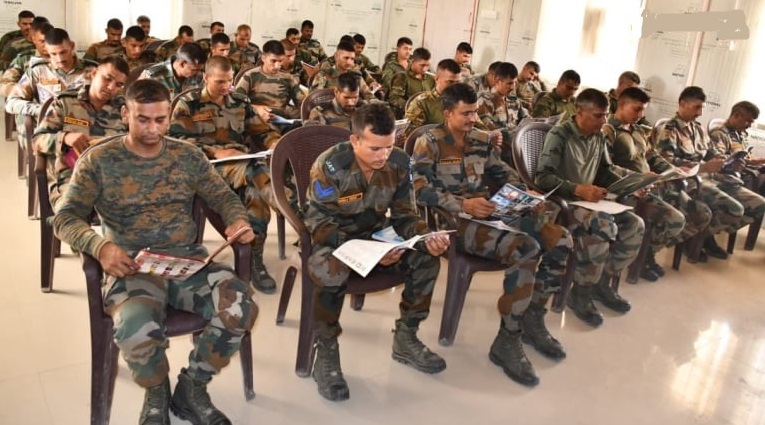 Agneepath Scheme replaced with Sainik Samman Scheme 2024, Defence Minister Rajnath Singh Relaunched Agniveer Scheme
Agneepath Scheme replaced with Sainik Samman Scheme 2024, Defence Minister Rajnath Singh Relaunched Agniveer Scheme
-
 China's Latest DF-31AG ICBM Test: A Strategic Leap in Global Missile Capabilities
China's Latest DF-31AG ICBM Test: A Strategic Leap in Global Missile Capabilities
-
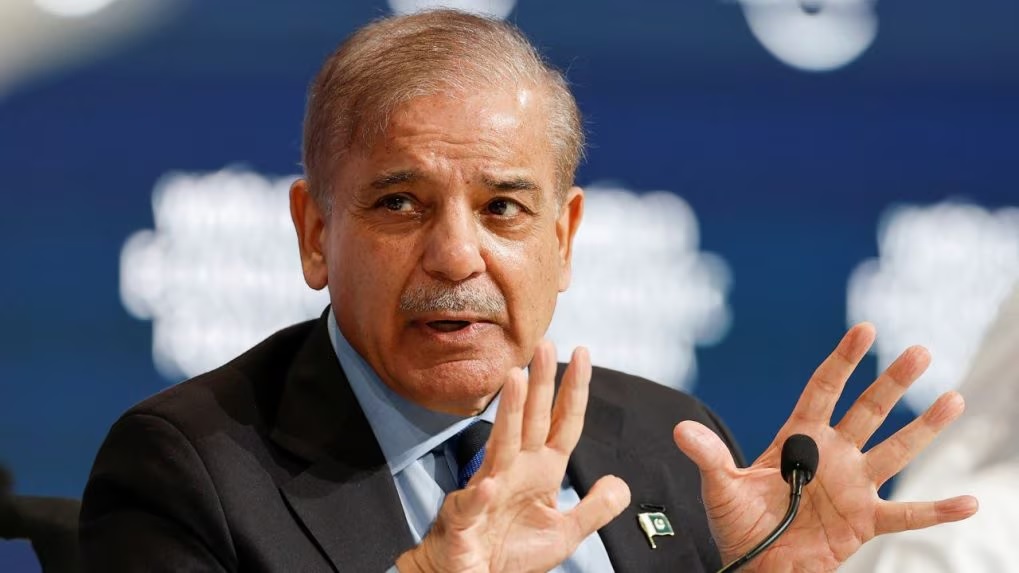 Pakistan Announces 15% Increase in Defence Budget for 2024-25 Amid Economic Crisis
Pakistan Announces 15% Increase in Defence Budget for 2024-25 Amid Economic Crisis
-
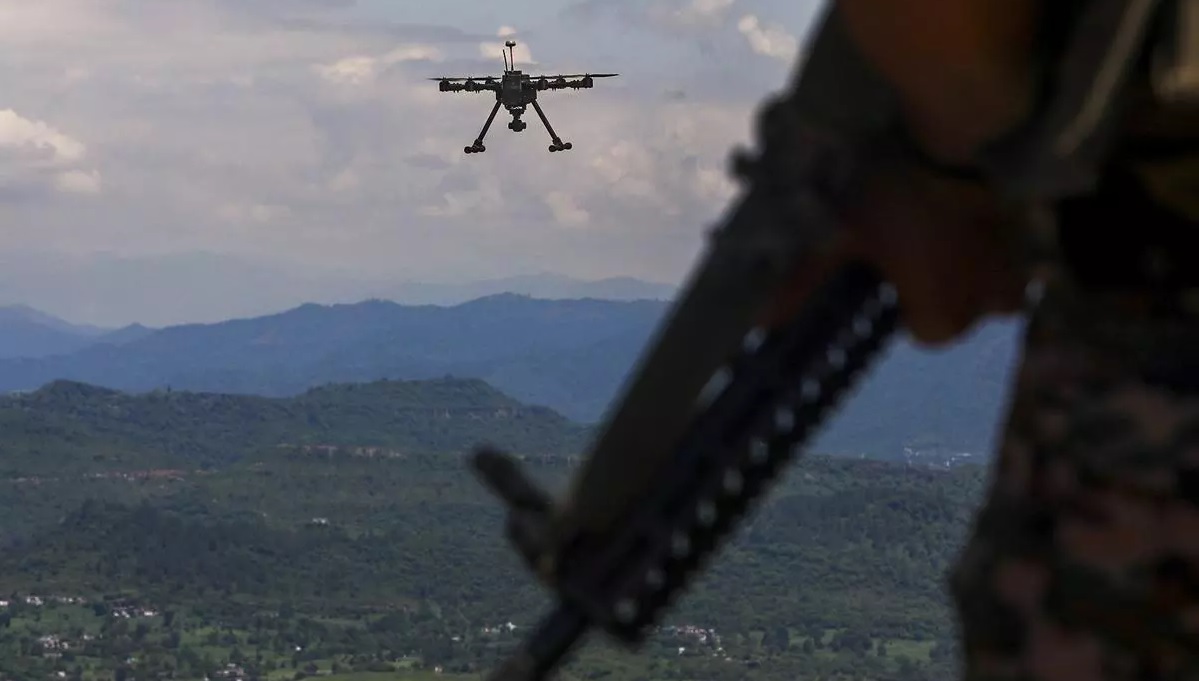 India's Defence Ministry Warns Against Chinese Parts in Military Drones Amid Security Concerns
India's Defence Ministry Warns Against Chinese Parts in Military Drones Amid Security Concerns
-
 China’s Super Radar Detects Mysterious Plasma Bubble Over Giza Pyramids
China’s Super Radar Detects Mysterious Plasma Bubble Over Giza Pyramids
-
 India's Indigenous Kaveri Engine Program with New Focus on Thrust and Performance
India's Indigenous Kaveri Engine Program with New Focus on Thrust and Performance
-
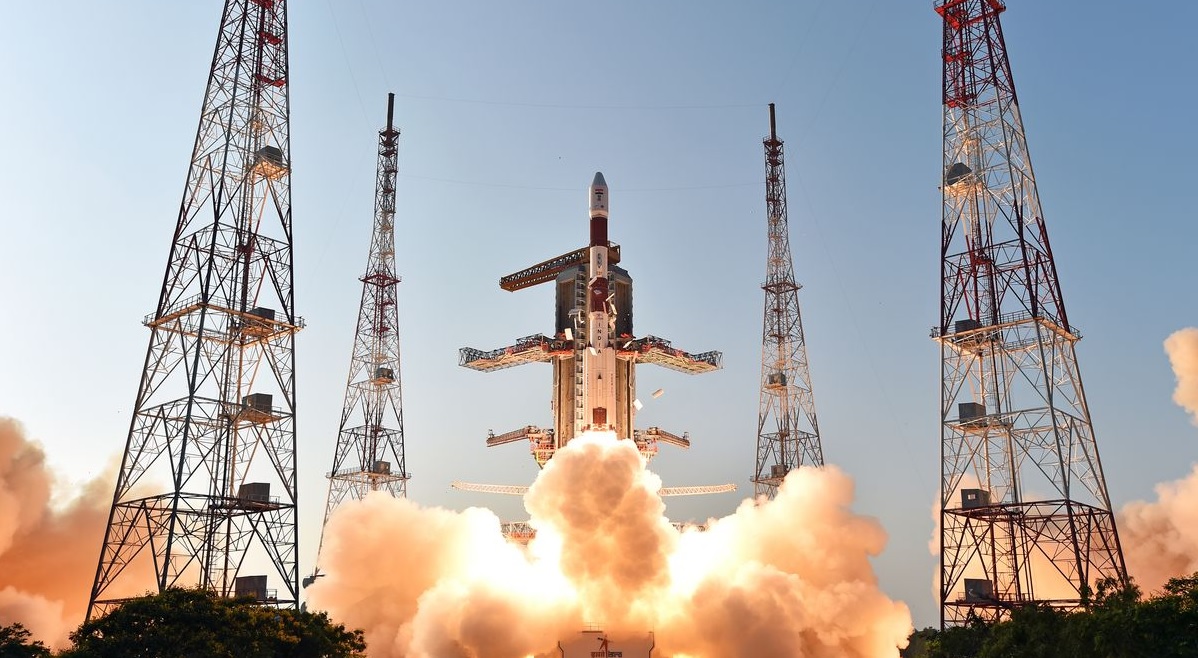 Isro Draws up Ambitious Plan for 2024, says will Launch at Least 12 Missions
Isro Draws up Ambitious Plan for 2024, says will Launch at Least 12 Missions
-
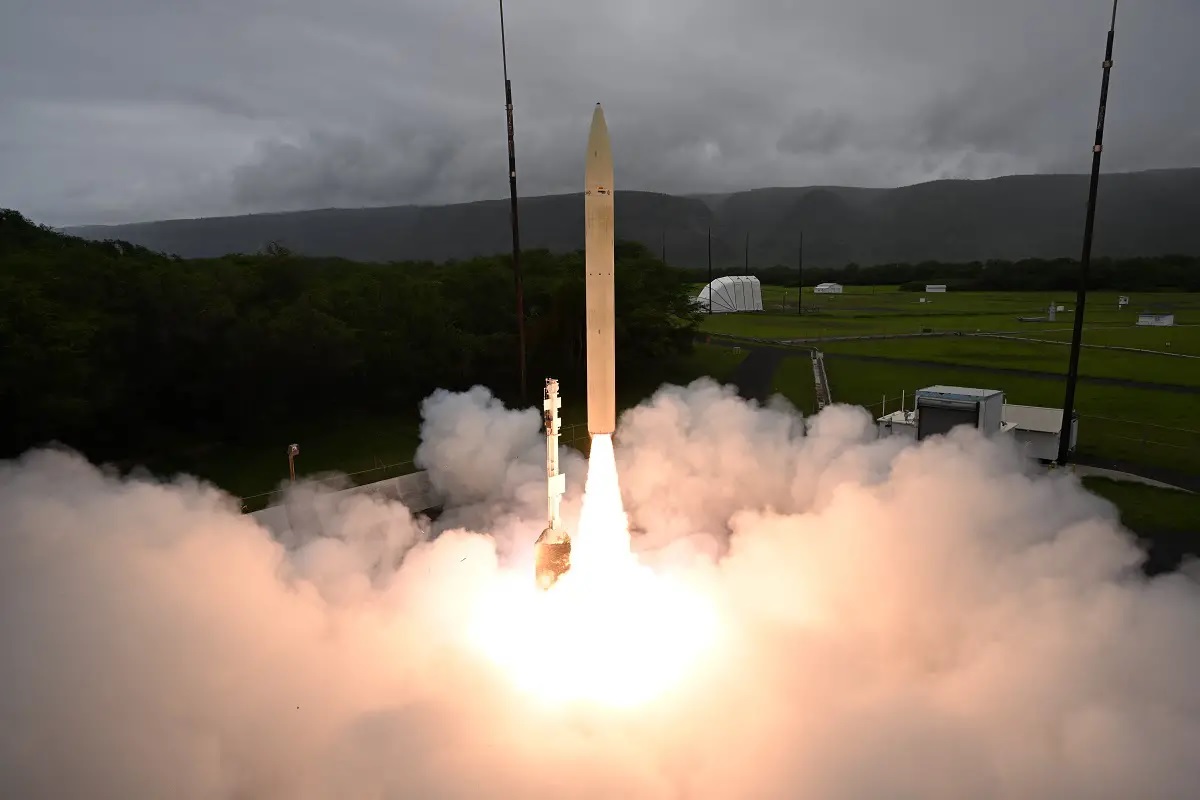 Successful Hypersonic Missile Test by U.S. Department of Defense
Successful Hypersonic Missile Test by U.S. Department of Defense
Top Trending in 4 Days
-
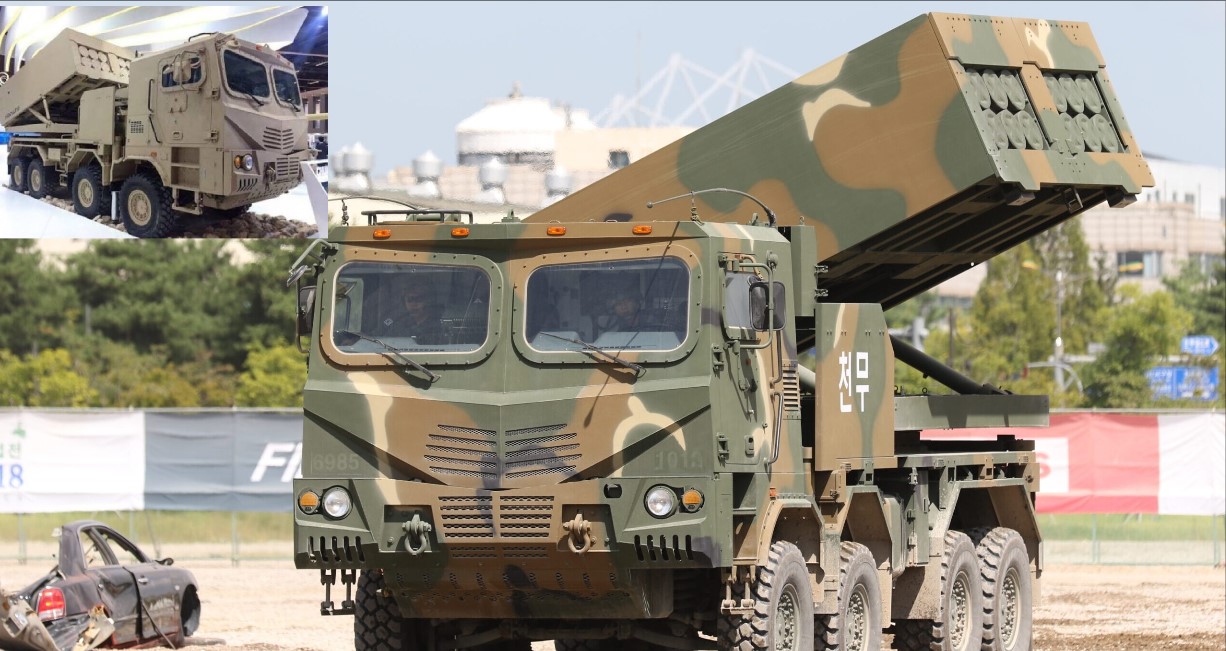 South Korea’s K239 Chunmoo Rocket Artillery Spotted in Saudi Arabia
South Korea’s K239 Chunmoo Rocket Artillery Spotted in Saudi Arabia
-
 Russia Fires Intercontinental Ballistic Missile at Ukraine
Russia Fires Intercontinental Ballistic Missile at Ukraine
-
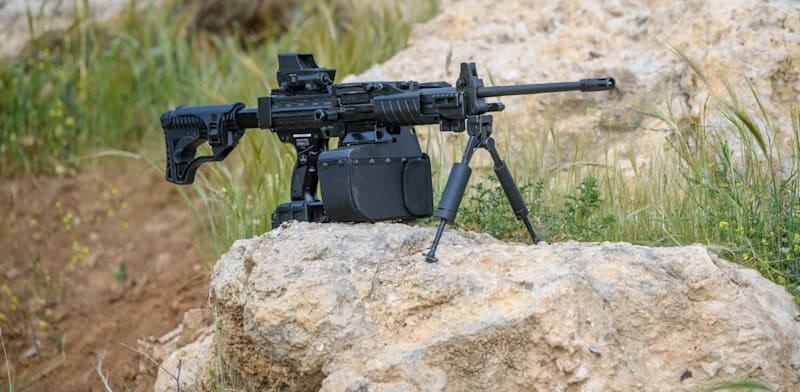 India-Israel AI-Enhanced Weaponry Makes Combat Debut in Gaza
India-Israel AI-Enhanced Weaponry Makes Combat Debut in Gaza
-
 Advancing Space Tech for Defense: ICEYE Leads Finland's F-35 Industrial Participation Program
Advancing Space Tech for Defense: ICEYE Leads Finland's F-35 Industrial Participation Program
-
 Russia Reports Interception of 44 Ukrainian Drones Including 20 over Novgorod region
Russia Reports Interception of 44 Ukrainian Drones Including 20 over Novgorod region
-
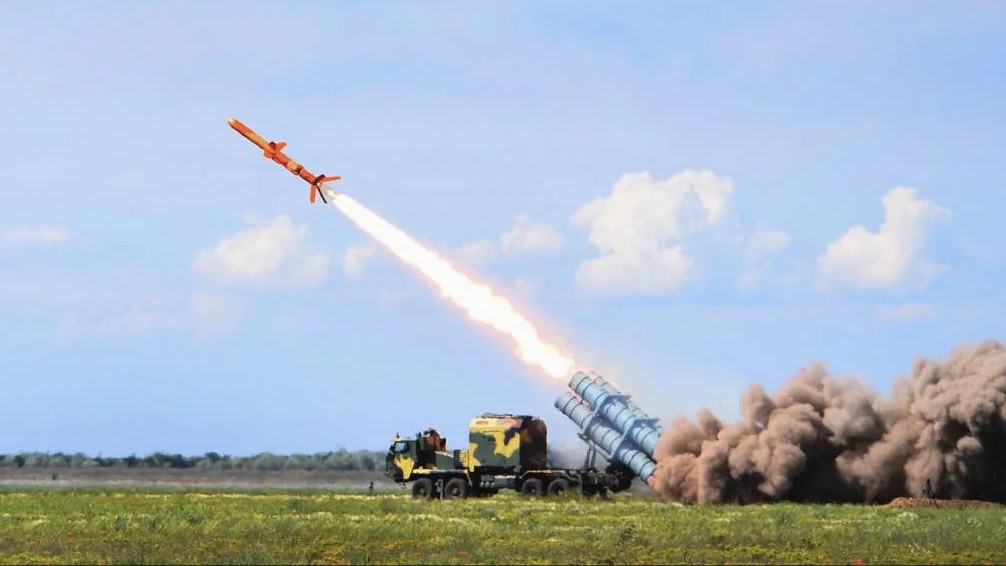 Ukraine Scales Up Neptune Missile Production: Over 100 Units Manufactured with Enhanced Range
Ukraine Scales Up Neptune Missile Production: Over 100 Units Manufactured with Enhanced Range
-
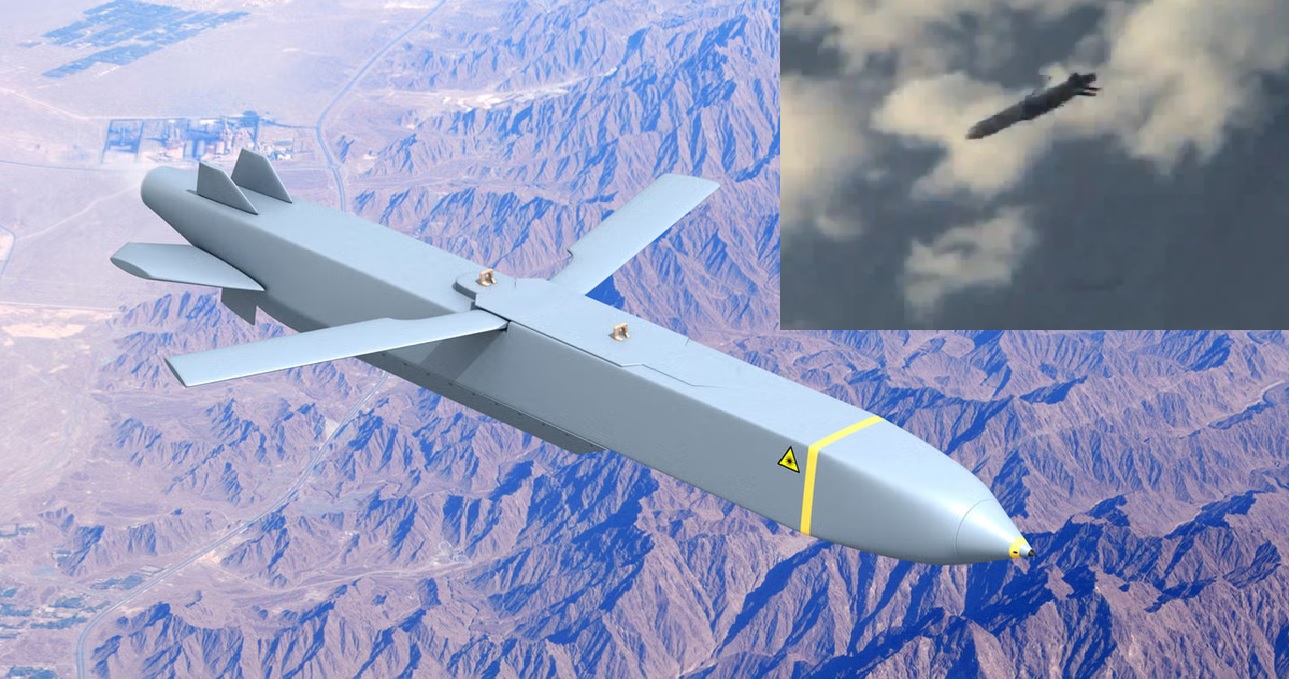 Ukraine’s Launched UK Storm Shadow Missiles to Strick Inside Russia
Ukraine’s Launched UK Storm Shadow Missiles to Strick Inside Russia
-
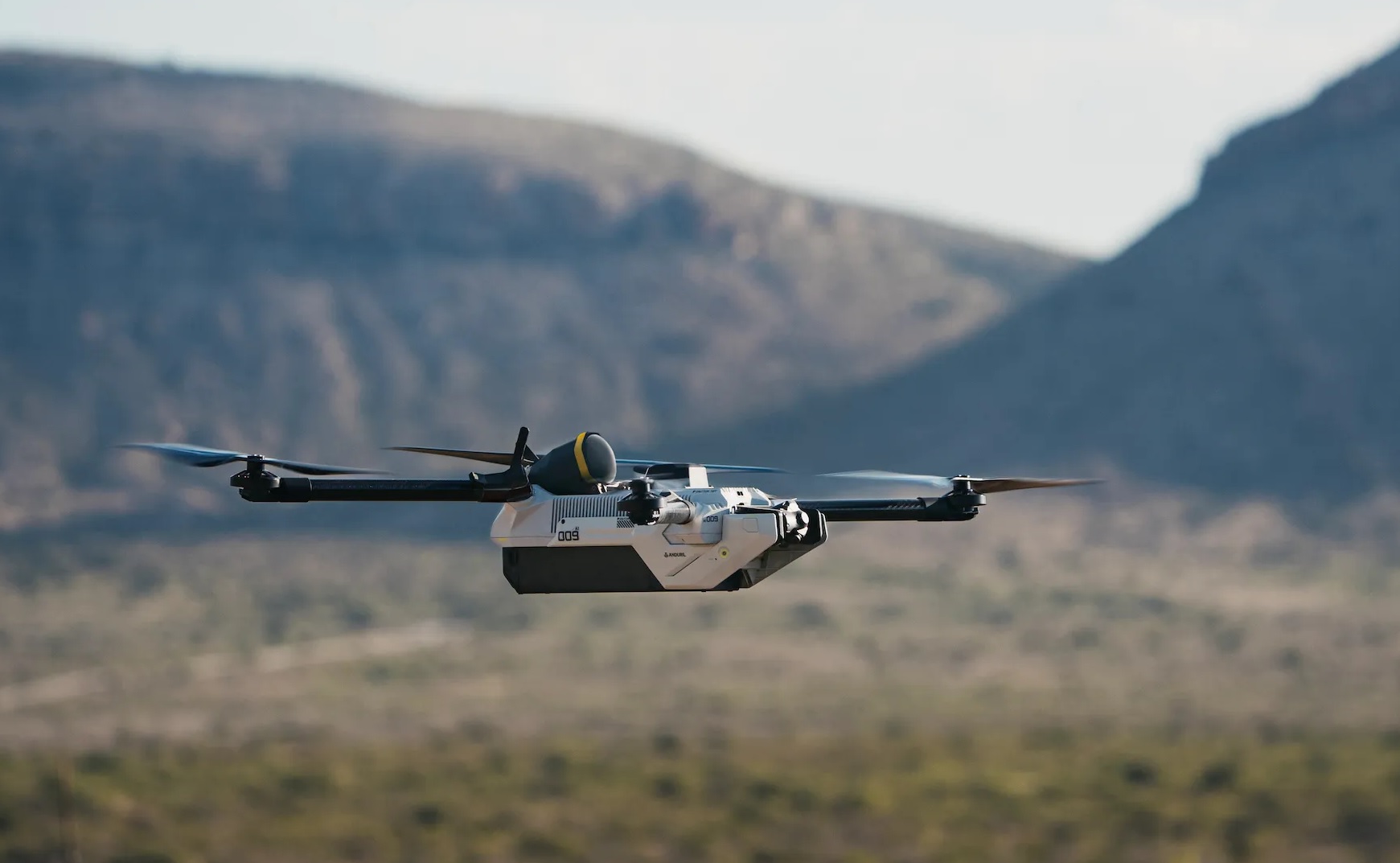 Anduril New Drone Countermeasures to Fortify U.S. Marines Against Aerial Threats
Anduril New Drone Countermeasures to Fortify U.S. Marines Against Aerial Threats

